
The frontline USN fighter until 1943
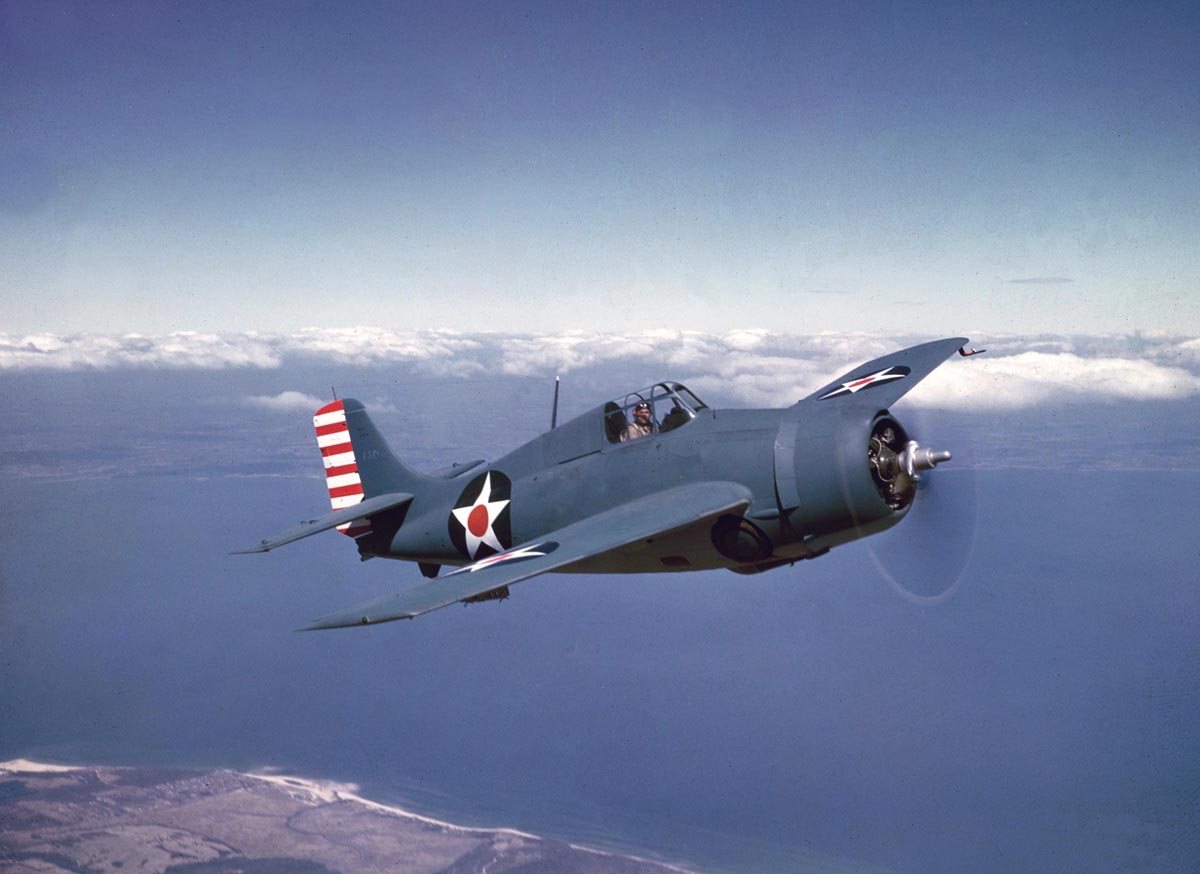
The Wildcat had the difficult task of carrying out the defense of the last USN assets in the Pacific after Pearl Harbor. But also to defend British aircraft carriers, for long deprived of a satisfying naval fighter. It fought on all fronts, under many flags, and suceeded that task facing the superior Mitsubishi A6M Zeke or Messerschmitt 109. Deployed on all aircraft carriers from 1940 to 1943 it was sidelined in favor of the F6F Wildcat that from then on, dominated the Pacific sky, but still soldiered on in the Atlantic and as an advanced trainer.
Development history of the Grumman F4F
Before it was called the Wildcat after wartime recoignition usage, the Grumman F4F was only the fourth iteration in a process of designing the world’s best naval fighters, at least from the US perspective. Before the F4F, the frontline naval fighter of the USN was of course the F3F, a biplane. The Grumman F3F (1935) was accepted in 1936 and in service on USN aicrat carriers and land bases until 1941. A contemporary of the Gloster sea gladiator and Japanese Mitsubishi A5M, it introduced an enclosed cochpit, retractable wheeltrain and many other innovations, making it still relevant for many pilots in the Navy still reluctant after the monoplane before the war.
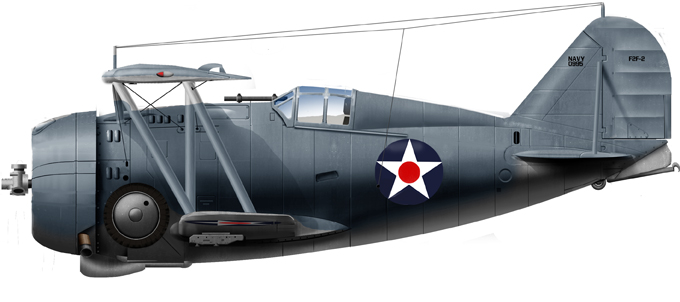
F3F-2 used as a trainer in 1942. The modern caracteristics of the design and numerous similarities made it still relevant for the advanced training of F4F pilots until late 1942.
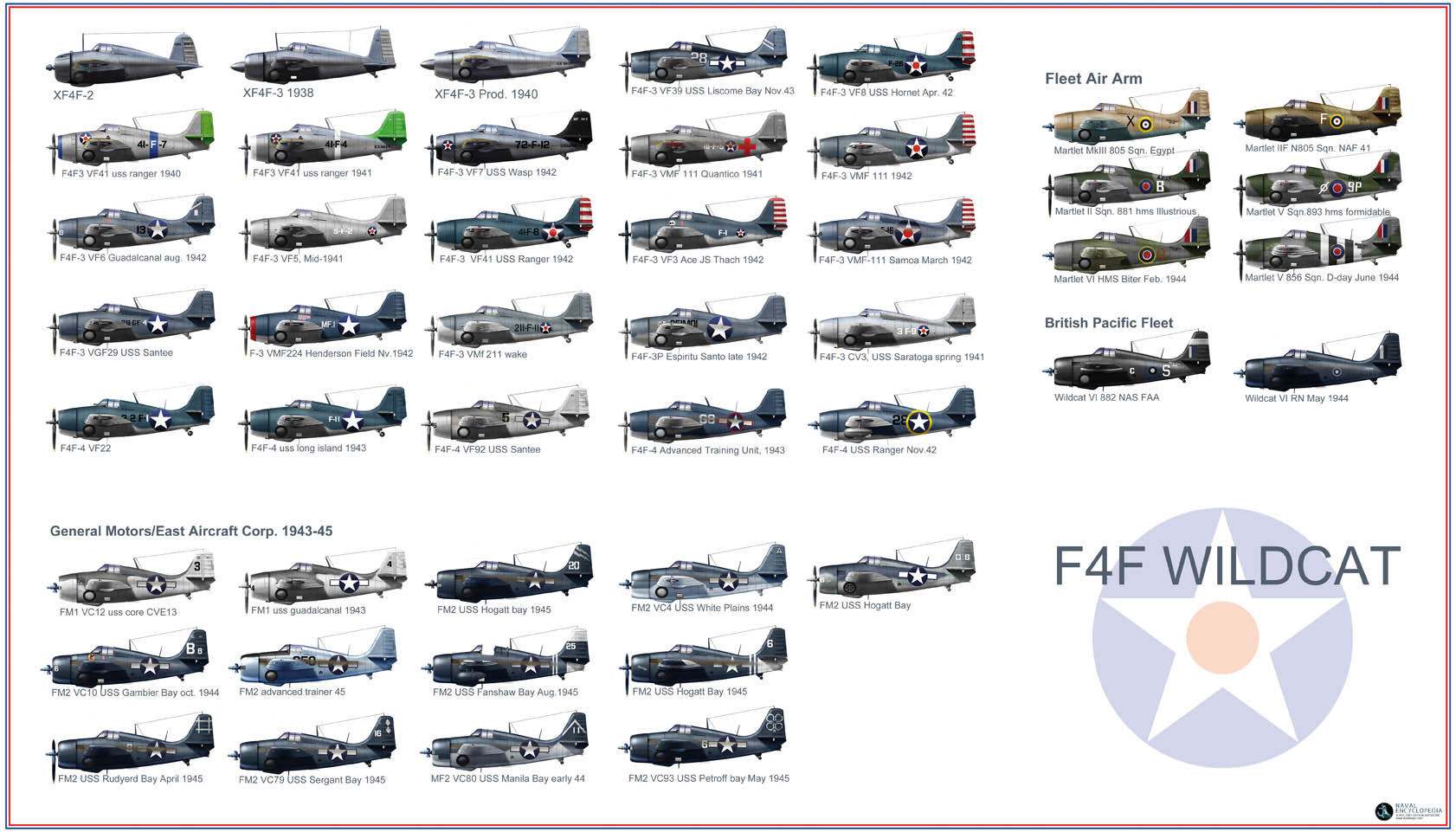
Poster dedicated to the F4F Wildcat, USN Grumman versions, GM versions, and Fleet Air Arm Martlet plus British Pacific Fleet’s Wildcat Mark VI. Help support the site !
The last version produced for the Navy was the 27 F3F-3s, a late deliver only accepted by the Navy’s good will, already set on monoplane designs. At the same time the Brewster F2A presented all what the Navy needed and received generous contracts. Grumman expected this move since 1935 however, and already worked on a monoplanedesign, based on the F3F. However this development was taking much longer than anticipated and in 1936 essentially, Brewster “stole the show” and obtained the contracts Grumman expected. The F2A-1 necame the first modenr monoplane in the USN. But the company’s numerous design shortcuts combined with constant additions and modifications turned the fast, nimble and agile fighter into a “pig”, vilified by its pilots. Produced in large numbers if filled the ranks promptly and all the F3Fs were sidelined from frontline service month before Pearl Harbor.
In the meantime, Grumman pushed its engineers to deliver the goods. Well informed by its contact in the Navy secretariate Leroy Grumman knew the growing difficulties encountered with the Brewster, and was ready to pounce.
The path to the F4F started with the multirole FF biplane in 1930, a two-seat model that was the first with a retractable landing gear. Retracting into the fuselage and leaving the tires visibly exposed, they added to the fuselage’s “belly”, giving this somewhat stocky apperance to all the biplanes which followed. The single-seat F2F afterwards was designed specifically as a fighter, and then the F3F, established the general fuselage outlines later reused for the F4F. Indeed in 1935, while the F3F was flight testing, Grumman worked on his next biplane fighter, the G-16. Soon however her was informed the U.S. Navy now looked for a monoplane design. Brewster presented is model and the F2A-1 entered production early in 1936. The Navy still trusted Grumman and his new biplane, and wanted a backup fighter anwyway since Brewster was a newcomer, former supplier wih no previous experience but dubious models. So an order was also placed for Grumman’s G-16 at the same time. It received the navy designation XF4F-1.
Grumman XF4F-1
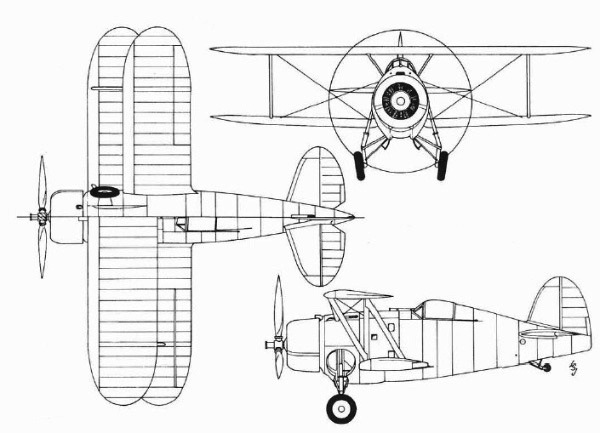
The XF4F-1 (Grumman G-16) never went further than the drawing board.
However Grumman now saw the Brewster and its early performances, and it seemed to him obvious that his XF4F-1 could not compare. He gathered his team for a reunion, and announced he would just abandon the XF4F-1. The obvious direction was now to convert the aborded project into a new monoplane fighter. To gain time and present a prototype as soon as possible, the new XF4F-2 program retain the same fuselage with an hand-cranked main landing gear and its narrow track. This choice of a manually-retractable main landing gear was criticized later, but at the time, it was believed the risk of an electric/hydraulic system was too risky in case of a hit. But landing accidents caused by failure of the main gear to fully lock into place were far too common for comfort.
Grumman XF4F-2 (1937-38)

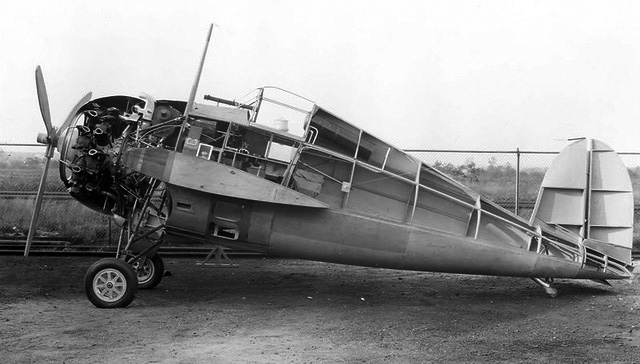
The XF4F-2
The final XF4F-2 was obviously fitted with two mid-fuselage wings due to the location of the retractable wheeltrain, like previous models. The XF4F-2 made its maiden flight on September 1937, this was BuNo 0383 prototype designed by Grumman’s Chief Engineer, Robert Leicester Hall. The first impression were no serious vices were found but it was not overly better than the previous F3F, and moreover, far less agile and fast than the F2A in its initial version.
This first flight was followed in April 1938 by another to the Naval Air Factory in Philadelphia for evaluation against the XF2A-1 Brewster Buffalo, and the Seversky P-35, converted by NAF as XFN-1.4 The XF4F-2 was damaged after a crash due to engine failure but repairs were made quick enough for it to resume trials. She was the winner for best top speed, at 290 mph (466 km/h)versus for the Brewster XF2A-1, 280 mph (450 km/h) and the Seversky XFN-1, 250 mph (402 km/h). Yet, the navy goal of 300 mph (482 km/h) was not achieved.
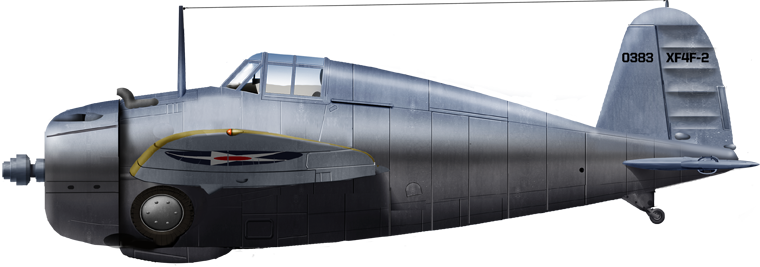
XF4F-2 in 1937
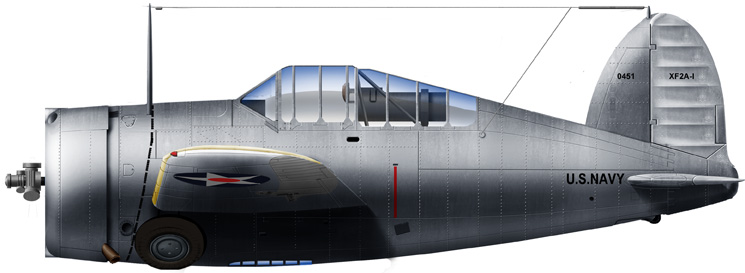
Brewster XF2A-1, 1938. Given that Grumman was not ready to show its F4F prototype, newcomer Brewster from New York came out with its own design. The “nice little ship” according to Greg “Pappy” Boyington when testing it, was soon overloaded and lost its performances. In 1942, it proved it was no match facing the A6M, and was soon sidelined. Fortunately Grumman since 1940 also impressed the Navy with the F4F and obtained considerable orders.
It was conclusive in the end as since overall performance were not stellar, as she only was marginally faster. the Navy would not adopt it, neither the USMC on grounds of standardization, the F2A winning instead. After some tweaks, the XF4F-2 ended marginally faster, but it was still far less agile, and deserved by its looks.
Loosing to the Brewster in a direct comparative flight ordered by the Navy, Leroy Grumman knew he had work to do. Rebuilding the prototype as the XF4F-3 became a priority. Nearly all aspects were reworked in detail. Only the canopy and some aspects of the fuselage were kept as well as the manual wheeltrain handcrack sytem. Agility had to do with the small tail and wings surfaces, the lenght of the fuselage and moreover the fittng of a better engine. The major discrepancy as it appeared, was the location of the wing tip. The XF4F-2’s wingspan was 34 feet (production F4F-3 38 feet) and the wingtip was located too far outboard, with rounded shapes, not squared as made later.
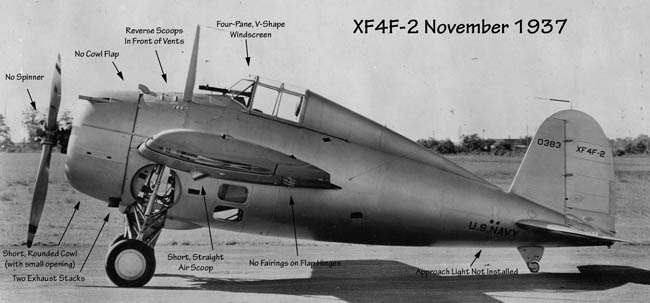
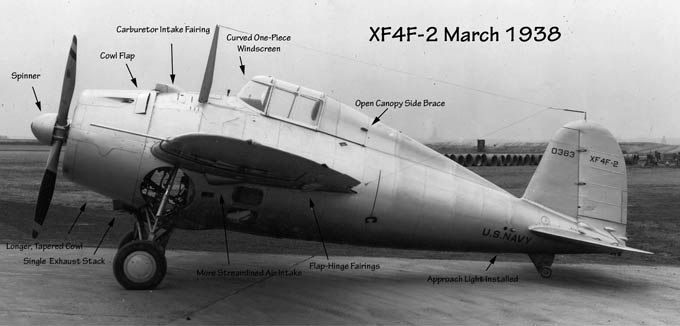
Early and late versions of the XF4F-3. Src Tommy H. Thomason, http://tailspintopics.blogspot.com
The XF4F-3
The prototype was considerable reworked, ended as the “late” XF4F-2, presented in March 1938. An open canopy side brace was added to minimize buffeting when open, a single exhaust stack located directly in front of the landing gear attach-points fairing to reduce drag, gun barrels shortened, new backside for the propeller blades, completely new engine hood. The aft tip of the fuselage ended a bit sooner than later F-3 production models, so the fuselage now measured 26 feets and 5 inches. The part of the fuselage behind the pilot had a raft stored in a large tube behind the headrest. Armor plating was not added at this point, nor self-sealing tanks. During the trials of this second version, one crash landed due to engine failure. This happened on 11 April 1938 but the pilot, Lieutenant Gurney, was not injured and BuNo 0383 was rebuilt eventually and became the XF4F-3 once a new engine was delivered in late 1939.
Grumman XF4F-3 (1939)
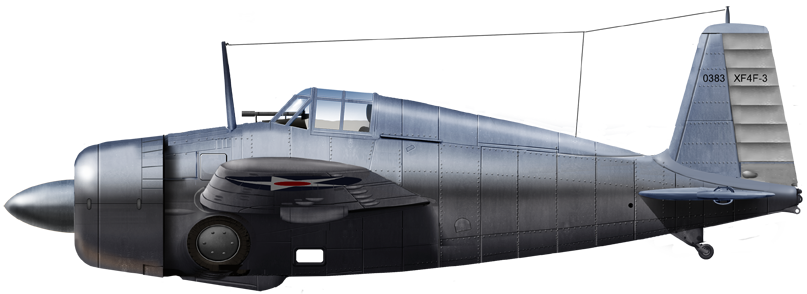
XF4F-3 as rebuilt in late 1938. The tail and fuselage transition were modified and the propeller cap was removed for production.
At the time Gumman was trying to iron out the new prototype for the U.S. Navy, both the French Navy and Royal Navy Fleet Air Arm were interested, and ordered practically “on the drawing board” the Wildcat in their own respective configurations, so at least Leroy Grumman was assured of sells in great numbers to make the whole R & D campaign quite profitable, fixing theses issues for more urgent orders, and having a more refined product for the USN later. Procurement was done via the Anglo-French Purchasing Board, settled in the US. The latter was created as desperation amounted during the “phoney war” to increase the input for all sorts of aircraft types and facing the luftwaffe that both feared.
France in particular, experienced many industrial delays and reconversion into a wartime industry and deliveries were slow. It was believed that the much larger output of US industries could gap their needs. Aside available bombers such as the Douglas Boston, France indeed ordered hundreds of Curtiss P-36 Hawk for its Armée de l’air early on, but also needed the Wildcat for its sole aircraft carrier, the Bearn, which atual fighters were old parasol models from the early 1930s.
For the British, the needs was no less urgent: In 1940 its policy of small air groups and versatile aircraft let the FAA adopt in 1940 the Fairey Fulmar, a modern monoplane designed as a jack of all trade, but certainly not on par with the Bf 109 at the time. Later, the Gloster sea Gladiator was adopted as a transitional model, until adaptations of the Hurricane and Spitfire were available. Without even knowing about final performances of Grumman’s model, it seemed a good fit and ideally could be delivered fast.
The new model of late 1939 and early 1940 had reworked wings and tail: Extended wings, new vertical fin and rudder, horizontal tail to get more stabilizing surface. At that stage, the prototype still internally kept the -2s Bureau Number, but due to the new engine ot was redesignated XF4F-3. Indeed the fuselage received a new supercharged version of the Pratt & Whitney R-1830 “Twin Wasp” radial engine. Testing showed this time performances head and shoulders above the production version of the F2A, considerably slowed down by all the required additions asked by the Navy.
The new F4F-3 was also way better than the previous version and led to an order completed in February 1940 for Britain. France ordered another variant powered by a Wright R-1820 “Cyclone 9” radial but the country fell in May before they could be be delivered. They were re-routed to the British Royal Navy, renamed locally Martlet.
Some work has to be done to convert them (notably all the instrumentation from metric back to imperial). The U.S. Navy at last adopted it too, on 1 October 1941, as the Wildcat. This was the first time a name was given to Grumman planes, but it was felt a necessity in wartime. The production F4F-3s had four .50 in (12.7 mm) Browning and they were pressed into service from mid-1940.
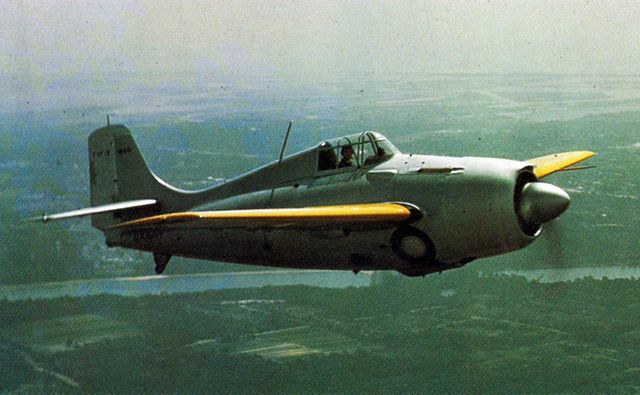
Early production F4F-3 in the summer of 1940 showing its propeller
On 16 December 1940, the XF4F-3 prototype BuNo 0383 was lost in odd circumstances, killing unfortunately the pilot. After studying what left of it, an enquiry concluded the pilot may have been confused by the layout of fuel valves and flap controls, having them turned off after takeoff (instead of flaps “up”). This was a red light and those commands were swapped and made clearer. There will be no other accident of the type, at least on trials.
Detailed design of the F4F-3
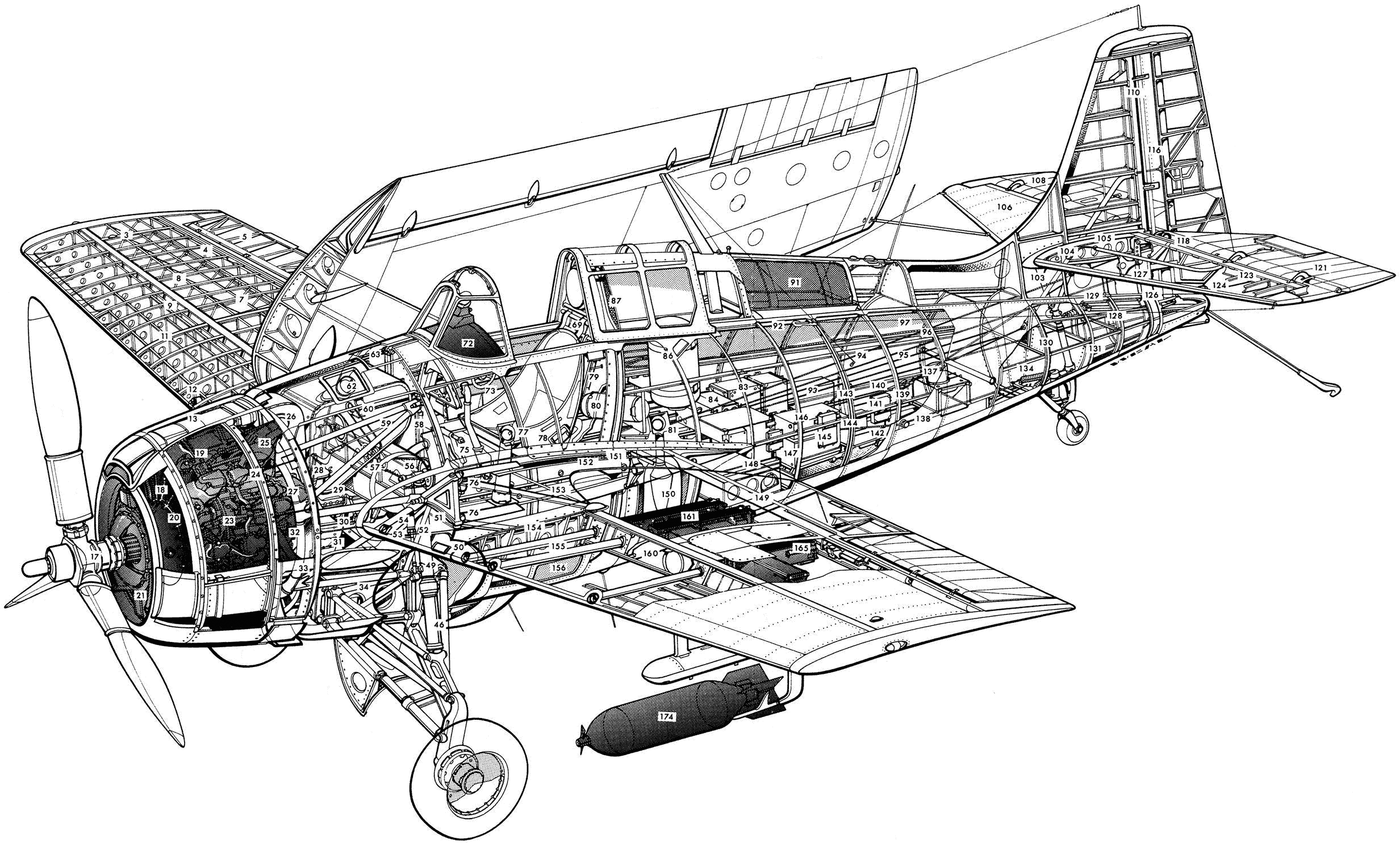
The F-3 was still stubby and short, just 28 feet, 10½ inches (8.801 meters) long for a wingspan of 38 feet (11.582 meters). Resting at 3-point attitude the height was 11 feet, 9 inches (3.581 m). Total area was 260 square feet (24.16 sq/m). Wings had 0° incidence and no leading edge sweep, thewings had 5° dihedral. Empty weight was 5,293 pounds (2,401 kilograms) and ready for takeoff 7,432 pounds (3,371 kilograms), filled with 147 gallons (556 liters).
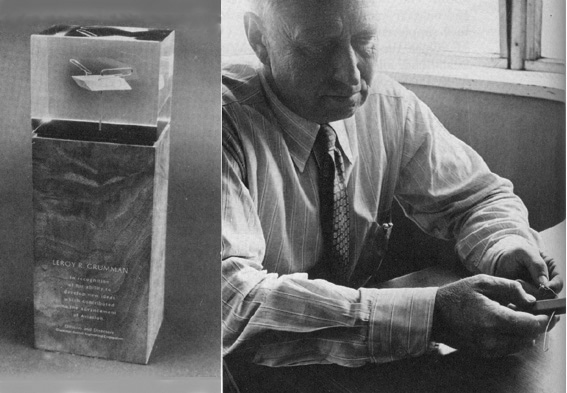
The trademark, very simple sto-wing principle explained by Leroy Grumman (USN)
Engine of the F4F
Pratt & Whitney twin wasp R-1830
This was the air-cooled, supercharged, 1,829.39-cubic-inch-displacement (29.978 liter) Pratt & Whitney Twin Wasp SSC7-G (R-1830-86) engine. This was a radial twin row, 14-cylinder in all, with a compression ratio of 6.7:1. The R-1830-86 normal power rating was 1,100 at 2,550 r.p.m. at Sea Level and 3,300 feet (1,006 meters). It went down to 1,000 horsepower at 2,550 r.p.m. at the altitude of 19,000 feet (5,791 meters). On takeoff, it was rated at 1,200 horsepower at 2,700 r.p.m., with a sufficient ratio to allow it taking off wothout a catapult on short distances (with hand-held wheels sabot brakes).
This will prove later a crucial fact in the longevity of the model: When production swapped at Grumman to the Hellcat, provided to the fleet carriers and light fleet carriers (Essex and Independence class as well as Saratoga and Enteprise), the numerous CVEs (escort carriers) were in need of fighters, and were provided with the General Motors version. They were chosen because of the reduced size of their flight deck and less opposition.
The spinner shaft activated a three-bladed Curtiss Electric propeller, 9 feet, 9 inches (2.972 meters) in diamater, through a 3:2 gear reduction. The R-1830-86 engine itself measured 4 feet, 0.19 inches (1.224 meters) in diameter and 5 feet, 7.44 inches (1.713 meters) long for 1,560 pounds (708 kilograms) which means it could be replaced on the field with little equipment, a simple hand-cranck gantry.
Performances were a top speed of 278 miles per hour (447 kilometers per hour) at Sea Level, 330 mph (531 kph) at high altitude, 19,000 feet (5,791 meters). It was tested at more than 32,000 feets, but it was able to climb to 20,000 feet (6,096 meters) in 7.6 minutes.Service ceiling was 30,500 feet (9,296 meters). Its maximum range was 1,280 miles (2,060 kilometers). It was brough to much better figures on the rare photo conversions at the end of the war (see above).

Armament of the Wildcat
The F4F-3 Wildcat was initially armed with four Browning AN-M2 0.5-caliber machine guns(12.7 mm) in the wings, whereas early prototypes of the F-2 had guns mounted in the engine and fuselage hood. Later variants would have six guns mounted in the wings, like the Hellcat.
Production of the F4F-3
The ex-French Wright Cyclone engine version which ended up with the Fleet Air Arm in June 1940 had to be converted from metric to imperial instruments and other perks asked by the French. This considerably delayed their introduction and they only entered service on 8 September 1940 as Grumman as G-36A. They also had a specific cowling, and fixed wings, without armament which was to be French, and some avionics were missing as they would have been also provided and installed by the French, tailored to their needs. All this took the best of July and August to fix in a workshop. In British service they were given the name Martlet I (or Mark I). They featured and armament of four .50 in (12.7 mm) M2 Browning machine guns.
The British also ordered a version fitted with the Twin Wasp engine (the Martlet I had the Wright Cyclone). They were given also a modified cowling, under the manufacturer designation G-36B. These were designated Martlet II when introduced into service, or G-36B (factory code). The first ten had non-folding wings and were called Martlet III, followed by 30 with folding wings (F4F-3A in USN designation), originally to be provided for the Hellenic Air Force, also as Martlet IIIs and then Martlet III(A) as a second serie of Martlet III was delivered.
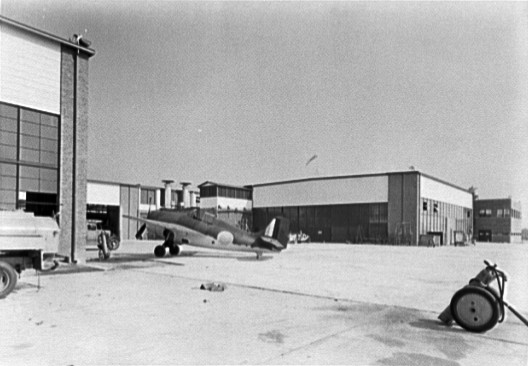
First production G-36A Martlet at Bethpage, long island october 1940
The armament installation initially was probematic. The heavy Browning machine guns were supremely reliable, but their installation was leaky and caused frequent jam. This problem was not unknown in wing installations, subject to vibrations and cold, but a better inultation eventually cured the problem. Befre this was done, early USN Wildcats were frequently plagues by jamming issues. For example, when Lieutenant Edward O’Hare famously shot down five twin-engine bombers attacking USS Lexington off Bougainville (20 February 1942), his wingman could not participate as his machine guns jammed.
The supercharged F4F-3A
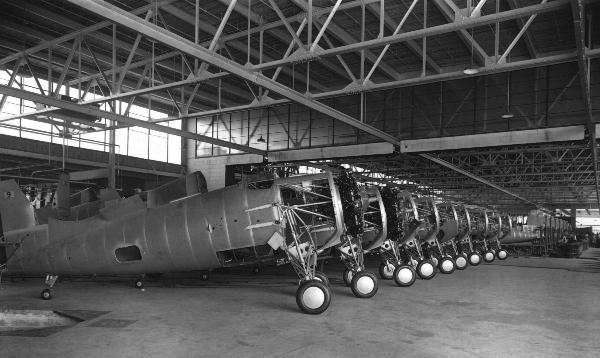
The production line at Bethpage, Long Island.
Another production issue, that slowed down deliveries, due to a shortage of two-stage superchargers: Indeed the new F4F-3A had a 1,200 hp (890 kW) Pratt & Whitney R-1830-90 radial engine, fitted with a single-stage, two-speed supercharger. It was able to fly at 312 mph (502 km/h) and climb rapidly to 16,000 ft (4,900 m). But the somewhat unreliable supercharger made it unpopular. It became the Martlet III(B) with the FAA.
In June 1942, a total of 18 F-3s and a single 3A were converted as photoreconnaissance planes, known as F4F-3P (for “photo”). Their reserve fuel tanks were replaced with Fairchild F-56 cameras, making them short range models, although a bit lighter. The F4F-3Ps were still fully armed in case and were operated by VMO-251, flying from Espiritu Santo. Missions started from July 1942 but they started to be replaced from October with the longer ranged, unarmed F4F-7.
The F4F-3S “Wildcatfish” Floatplane (1943)
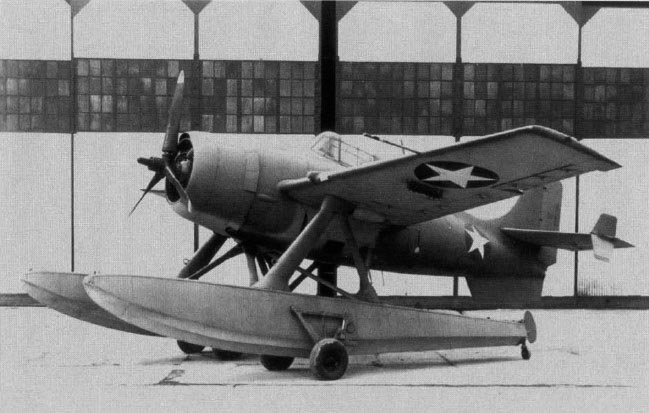
F4F-3S Wildcatfish at Edo Aircraft Corporation
Encounters of the Japanese A6M2-N “Rufe” an A6M-2 on floats, first encountered in the Aleutian islands made the USN reflecting on the concept of having a good flighter on floats, operating from isolated island bases as a defensive fighter when no airfield was available notably, or to be carried in complement to scout floatplanes aboard some units of the USN. The initial plan was however to have them used on forward island bases. BuNo 4038 was taken of production for modifications. The end model was known as the F4F-3S, “S” for “seaplane”. The unofficial nickname was first coined by the design team, and stuck, “Wildcatfish”.
This was a standard model without wheeltrain, which was retired and openings plated over, no tailhook, and two floats manufactured by Edo Aircraft Corporation as per the contract signed with Grumman in september 1942. They were fitted with struts resting under the fuselage and the wings base. To restore stability there small auxiliary fins added to the tailplane and later after production was ongoing, a ventral fin was also added.
This basic model took 80% of the elements of a standard land F4F-3 Wildcat, the four cal.05 caliber Browning machine guns preserved. Reinforcing rigging was installed between the two new floats and the aircraft. They attached to the fuselage as well as to the airfoil. Small vertical stabilizers had been installed at the horizontal tail planes to reduce drag. A wheel cart could be installed on the floats but was not used for takeoff or landing of the XF4F-3S, only for taxiing during logistical phases.
If the floats were not very heavy, they caused a lot of drag and agility suffered as a result. Top speed also fell to 241 mph (388 km/h). But these tradeoffs were still considered OK to some to propose a limited production. The prototype indeed flown on 28 February 1943 and it compared badly to the Rufe, even so to the Zero. This demonstrated also its XF4F-3S needed a proper keel for lift-offs and large ventral fin was installed so that testing could be resumed. The wildcatfish nevertheless setup a national record for rapid take-off in just thirty-four seconds, but in closed water and no wind.
Officials were however frustrated as the lack of results for the whole program. By May 1943 the fighter was now obsolete with a cruising speed of just 385 kph, making it vulnerable to all Japanese fighters of the time. In June, the whole program was terminated, but it was not the end of the story however:
The sole seaplane was indeed transferred to Edo’s workshops to support several test programs, testing floats and other equipments. Eventually the Wildcatfish was scrapped in 1946, but proved like the Spitfire Floatplane developed by Folland that a good land based fighters does not necessarily translate into an equally good fighter seaplane. With a limited usefulness and airfields by the “Seabees” in the matter of days or even hours just made this project no longer relevant at that stage. The single prototype remained unused in combat and the fighter with floats concept was really only mastered by the Japanese and remained for the allies a dead end concept.
The ultimate wildcats: F4F-4, F-5, and FM-1/2 (1943)
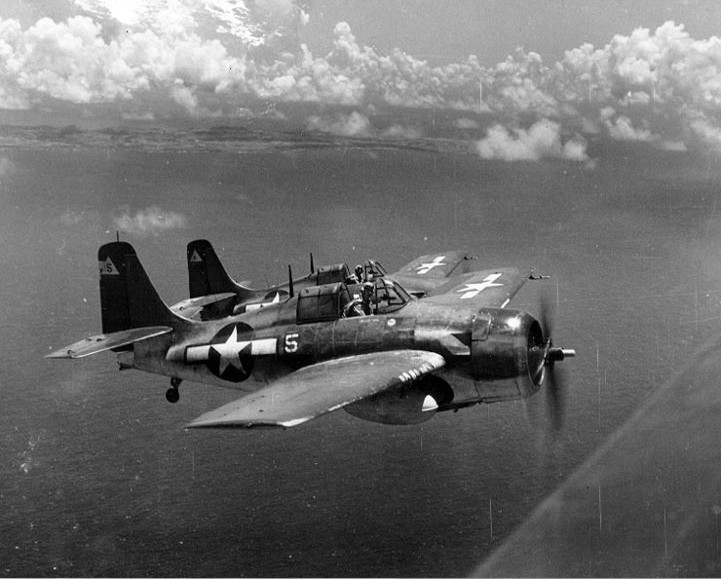
FM-2, CVE-66 USS White Plains, Rota island, June June 1944
Altough by far and large, the F-3 was the main production version of the Wildcat, the model was improved, up to the time the F6F was already worked out. Two early production F4F-3s (N°3 4, BuNo 1846 & 1847) were given the new Wright R-1820-40 engine. They were tested and given the designation XF4F-5, making it into production with General motors. Indeed, the bulk of the overall production or nearly 8,000 aircraft was made not by Grumman, but by General Motors through the Eastern Aircraft plant. They produced altogether 5,280 Wildcat known as “FM-1”. Indeed at Grumman, the paper F5F was soon replaced by the new F6F.
The Wildcat was no longer produced in in early 1943, but General Motors went on, not only for the FAA (Martlet) but also the U.S. Navy second-line units and USMC. Obsolescent as front line fighter indeed, it was still good enough to defend small escort carriers against rare long range planes, or spotting/attacking submarine or deal with aircraft from the shore.
These escort carriers outside the Wildcats only carried the GM-built TBM Avengers. The wildcat at this point was still light enough to take off without catapult, a low landing speed making better for small flight decks. GM FM-1 wildcat was Wright engine F4F-4, with just four HMGs but added wing racks to carry two 250 lb (110 kg) bombs, or rails for six rockets. Production swapped later in 1943 FM-2 derived from the XF4F-8 prototype, fully optimized for small-carrier operations. This FM-2 was given the more powerful 1,350 hp (1,010 kW) Wright R-1820-56). It was also fitted with a taller tail, to compensate for the added torque.
The last General Motors F4F was the The F2M-1. It was a paper project only, a planned development of the FM-1 created by General Motors with Eastern Aircraft and the improved XR-1820-70 engine. It was cancelled at that stage so late into the war.
The ultimate version of the Wildcat was in reality the F4F-7 specialized photoreconnaissance variant (only 21 built). It had no armor nor armament to make it lighter, and non-folding “wet” wings used as extra tanks, with 555 gallons (2,101 L) making for a grand total of 700 gallons (2,650 L), the range jumpring to 3,700 mi (5,955 km).
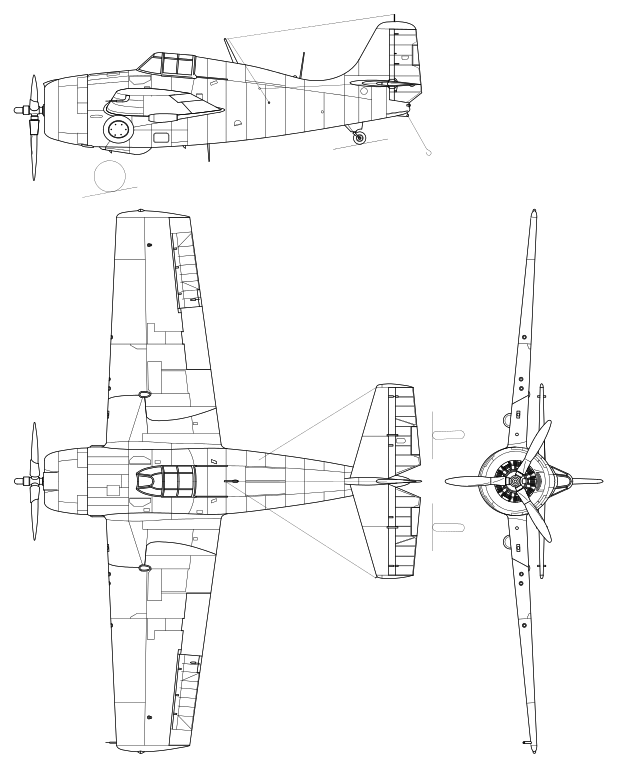
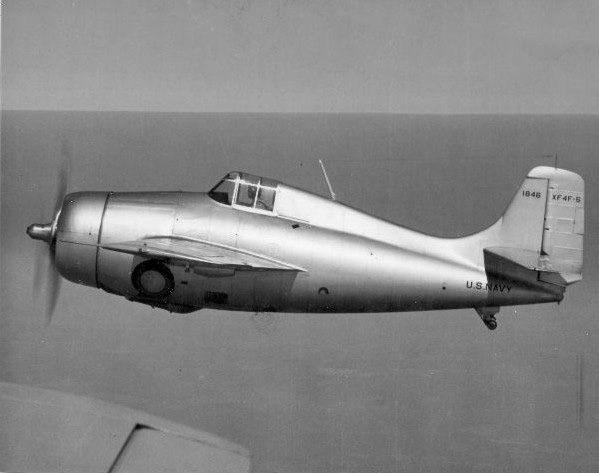
XF4F-5
⚒ Grumman F4F-3 specifications 1941 |
|
| Dimensions | 28 ft 9 in (8.76 m) x 38 ft 0 in (11.58 m) x 11 ft 10 in (3.61 m) |
| Wing area | Wing area: 260 sq ft (24 m2) |
| Airfield | Root: NACA 23015; tip: NACA 23009 |
| Weight, empty | 4,907 lb (2,226 kg) |
| Weight, gross | 7,423 lb (3,367 kg) |
| Propulsion | Pratt & Whitney R-1830-76 14-cyl 1,200 hp (890 kW) |
| Propeller | 3-bladed constant-speed propeller |
| Speed, max. | 331 mph (533 km/h, 288 kn) |
| Ceiling | 39,500 ft (12,000 m) |
| Climb Rate | 2,303 ft/min (11.70 m/s) |
| Range | 845 mi (1,360 km, 734 nmi) |
| Wing load | 28.5 lb/sq ft (139 kg/m2) |
| Power/mass | 0.282 kW/kg (0.172 hp/lb) |
| Armament: MGs | 4 × 0.50 in (12.7 mm) AN/M2 Browning MGs with 450 rounds |
| Armament: Bombs | 2 × 100 lb (45.4 kg) bombs |
| Armament: Rockets | Six 5 inches (127 mm) rockets underwings, 2×3 racks (FM-2) |
| Payload: | 2 × 58 US gal (48 imp gal; 220 l) drop tanks |
| Crew: | One Pilot |
The Wildcat in action

USN use 1941-45
The United States Navy began deploying Grumman F4F-3 fighters aboard its carriers in January 1941. However, it was a slow process and at the time of Pearl Harbor, only USS Enterprise had a fully equipped Wildcat squadron, VF-6. She transferred when the attack happened a detachment of VMF-211’s F4F-3s to Wake. USS Saratoga in San Diego was still working up its freshly arrived F4F-3s, VF-3. Also eleven F4F-3s (VMF-211) has been delivered to the Ewa Marine Air Corps Station, Oahu. Nine were damaged/destroyed on December 7th. Wake’s VMF-211 lost seven Wildcats on 8 December, the remaining five shooting bombers from 9 December and even claiming a destroyer, IJN Kisaragi with bombs and machine guns. This was the first Japanese reverse of this war, and the invasion force retreated (only offering a respite).
In May 1942, the F4F-3s of VF-2 and VF-42 (Yorktown, Lexington) fought at Coral Sea, pitted against zeros from IJN Zuikaku and Shōkaku plus Shōhō. The contest for Port Moresby happened to be a pyrrhic victory during which bombers and torpedo planes without fighter escort were doomed. However tat that stage the weak fighter component was both insufficient for escorts and to provide even a CAP with less than 20 fighters. That role was played much later by the CVLs (Independence class).
One particular way the F4F became a legend, was during the protracted battle of Guadalcanal. The squadrons deployed in Henderson field became almost all aces in the span of days (see later). They were deployed from all fleet carriers of the USN, the three Yorktown, the two Lexington class, USS Wasp, and Ranger, and the CVEs derived from USS Long Island. They also even equipped the first Essex class aicraft carriers from December 1942 to mid-1943, until replaced by the F6F.
Its only use in between, in the western hemisphere was Operation Torch, from USS Ranger. They also participated in Operation Leader in October 1943, an anti-shipping strike on Norway for US escort carriers. During the initial phase of Guadalcanal (1st August – 15 November) 115 Wildcats were lost, traded for 106 Zeros to all causes. After the Battle of Coral Sea and Midway, land-based Wildcats at Guadalcanal held the line despite a known inferority, before the Grumman F6F Hellcat and Vought F4U Corsair couild be introduced in numbers. That transition took time, and between those used by fleet carriers, onboard escort carriers, from land bases and by the USMC, the Wildcat was still the dominant USN fighter in the summer of 1943. The longer transition was made, the longer this model stayed active. Some started to arrive in advanced combat training units only from 1944 and most escort carriers still used it until the end of the war.
General Motors FM Wildcats which were not pressed into the USMC and escort carriers were used in the Fleet Air Arm. The arguably best of the whole serie was probably the 1943 FM-2 based on the XF4F-8 and nicknamed the “Wilder Wildcat”. It was especially optimized for small-carrier operations and started to be equipped as fighter bomber, with racks underwings to drop bombs and depht charges on U-Boats, deployed against ground targets, despite the larger payload of the Hellcat and especially the Corsair. They were still perfect for the small decks.
On the Pacific, one of their last use was during the Battle off Samar, on 25 October 1944. Thos onboard the few CVEs of TF 77.4.3 (“Taffy 3”) off Leyte, covering landings and had to face a mighty surface fleet and all available Avengers and FM-2 Wildcats (Taffys 1, 2 and 3) despite the AA, resorted to strafing. Yamato’s bridge for example was crippled. Combined with the unexpected rush of USN destroyers, this fierce opposition was enough to dissuade the Japanese, confused, which eventually withdrew.
All in all, from 7,860 Wildcats of all types built, they flew a combined 15,553 combat sorties, including 14,027 from aircraft carriers, claimed 1,327 enemy aircraft for 178 aerial losses, 24 to ground/shipboard fire, and 49 to operational causes, making for an overall kill-to-loss ratio of 6.9:1. This was a far cry from the later Hellcat, but still far better than expected in light of to their opposition in 1942-43.
Comparison with the Zero
The Wildcat is compared to the Japanese Mitsubishi A6M Zero, of the same generation and created to perform the same role. It was generally eccepted that the latter outperformed the F4F at any level, in the context of a pure dogfight. But unexpectedly, it held its own due to two main reasons:
-A relatively heavy armor, self-sealing fuel tanks, robust airframe
-The ZB homing device allowed to find their carriers in poor visibility or at night (30 mi (48 km) range).
This went down to design philosophy. The Zero was a lightweight, long range fighter design with agility first in mind. It was powered by a generally smaller engine, and had a very lightweight structure, often easily dealt for with a single burst of 0.5 inches machine guns rounds. The Wildcat on the other hand, could survived an amazing punishement. The pilots adored it for that, taking advantage of this to compensate for their lack of built-in agility or speed, and of skills at the beginning.
In the hands of an expert pilot, and with a tactical advantage at the start, the Wildcat was just proven deadly even against the Zero. Fleet Air Tactical Unit Intelligence Bureau reported USN Commander “Jimmy” Thach, a former ace, devising a defensive tactic in which formations acted in a coordinated way to counter a diving attack. It was called the “Thach Weave”. This became the textbook tactic for the whole Guadalcanal Campaign. It comnined high-altitude ambush followed by coordinated hit-and-run maneuvers, using altitude and the power and climbing rate as advantages. This also combined an early warning system with Coastwatchers and radar to direct flights in the most favourable spot.
When Wildcats could not gain altitude in time, losses were high. On 2 October 1942, when trying to fend off an undetected Japanes force from Rabaul the “Cactus Air Force” (Henderson field) lost six Wildcats for one Zero. But American pilots skills only improved in time, and they were grizzly veterans on really better machines, the F6Fs, in 1944. Meanwhile the Japanese never really succeeded to replace the Zero in significant numbers, and lost heir superiority in skilled pilots. Training standards and experience were poor at Leyte in 1944.
Japanese ace Saburō Sakai described the Wildcat’s amazing resilience in thes terms: “I had full confidence in my ability to destroy the Grumman and decided to finish off the enemy fighter with only my 7.7 mm machine guns. I turned the 20 mm cannon switch to the “off” position, and closed in. For some strange reason, even after I had poured about five or six hundred rounds of ammunition directly into the Grumman, the airplane did not fall, but kept on flying. I thought this very odd—it had never happened before—and closed the distance between the two airplanes until I could almost reach out and touch the Grumman. To my surprise, the Grumman’s rudder and tail were torn to shreds, looking like an old torn piece of rag. With his plane in such condition, no wonder the pilot was unable to continue fighting! A Zero which had taken that many bullets would have been a ball of fire by now.”
Allied use: FAA
The F4F was introduced in the FAA as the Martlet, as an interim replacement for the Fairey Fulmar, still in development. The Fulmar was a far larger two-seat, versatile fighter-bomber with good range but lacking agility. Navalised Supermarine Spitfires were a dream as production was reserved for the Royal Air Force. Adapting the Hurricane was in process, but will take tome to mature. Therefore, apart the obsolete Gliadiator, the only modern fighter in the Royal Navy at the time, and for long, was the Martlet. Its first combat victory came on Christmas 1940, from a Scapa Flow airfield. It shot down an incoming Junkers Ju 88 bomber, also the first combat victory by a US-built fighter in British service.
The Martlet also was adopted soon on smaller escort carriers, Six for example operated from HMS Audacity by September 1941. They proved invaluable, shooting down several Luftwaffe Fw 200 Condor, nicknamed the “scoyrge of the Atlantic” by Churchill. They gave a strong defence in convoy operations until the German mastery of the sky evaporated and the last operational units were reduced to nil. Martlets with the roundel were also heavily engaged in aerial combat in the Mediterranean. One of such missions was for Convoy HG 76 to Gibraltar in December 1941, when Martlets claimed many kills, mostly Stukas and Italian bombers.
As Grumman cased production, 300 Eastern Aircraft FM-1s (Martlet V), the first produced, were shipped in 1942–43 to the FAA, and 340 more FM-2s, (Wildcat VI) in 1943, as well as 1,200 former F-3 Wildcats in surplus, whereas in January 1944, the type was definitely identified as the Wildcat. By March 1945 their last victories were four Messerschmitt Bf 109s over Norway. Eric M. “Winkle” Brown, British test pilot only had praised about it.
The last air raid in Europe was Operation Judgement on May 5, 1945, with Avenger bombers escorted by eight Wildcat VI (846, 853 and 882 NAS) from escort carriers. The target was a U-boat depot near Harstad in Norway. One Wildcat and one Avenger were lost. Deployment in the far east afterwards was limited, as the Sea Hurricane and Seasprifire, seafire and Firebrand were all now involved in operations. The Wildcat made its time.
In total the Fleet Air Arm received 1172 Wildcat 1940-1945. The first Wildcat used by the Fleet Air Arm were 53 Grumman G-36a Martlet I, and 6 Grumman G-36a Martlet III diverted from a French order which had not been delivered before the Fall of France in 1940. The aircraft were all delivered to the British Purchasing Commission on 23 August 1940 and transferred to the first FAA unit 804 Hatston on 7 September 1940 (eg AX827), 778 squadron at Arbroath in September 1940 (eg AX826), 759 squadron at Yeovilton in October and November 1940 (eg BJ555) and 802 squadron at Donisbristle on 23 November 1940 (eg AL237). Further aircraft in 1940 were lost when 20 Grumman G-36a Martlet I diverted from an undelivered French orders sank with SS Ruperra which was torpedoed 500 miles NW of Ireland on 19 October 1940. Originally Belgium ordered at least 10 Martlet Mk I’s never delivered and transferred to the Royal Navy after surrender while the French Aeronavale also had 81 aircraft on order initially. The Hellenic Air Force also ordered 30 Martlet Mk IIIs which were delivered to Gibraltar transferred to Royal Navy after April 1941.
The next Wildcat to be received by the Fleet Air Arm were in Spring of 1941, when 30 Grumman F4F-3a Martlet III ordered by Greek Purchasing Commission in August 1940 for shipment to Greece reached Port Suez in April 1941, then diverted to the Royal Navy under Lend-Lease transfer on 4 April 1941. These aircraft were subsequently involved in convoy patrols, one Martlet piloted by Sub Lt R Griffon shot down a S.79, forced two others to jettison bombs, then hit by return fire attacking a fourth, dived vertically into sea 50m N of Ras el Milh on 28 December 1941.
Martlet II started to be delivered in December 1941, when 54 were shipped from New York to Bombay arriving in March 1942 (AJ100), this was closely followed by further losses of 10 Martlet III in HMS Audacity on 21 December 1941. With this situation, 16 Grumman F4F-3 [Martlet III equivalent] were loaned from the US Navy to 890 and 892 Squadrons during work up at Norfolk, Virginia, USA from 18 July 1942 until 12 September 1942 after which the aircraft were returned to the USN. All these aircraft were from the USN squadron VF-9, and carried 9F codes (they kept their US Nos: BuAer Nos 1858-3873).
By February 1942, the first major delivery of 220 Wildcat IV (ex Martlet IV until 1.1.44) was made. 806 squadron was equipped with Martlet II from July 1942 on HMS Indomitable, whilst most were shipped to the UK in September 1942 onwards, first reaching 896 squadron in November 1942, and 312 Grumman FM-1 Wildcat V delivered in June 1943 to 787 squadron and C Sqdn A&AEE in July 1943, and 1832 squadron from August 1943.
The Wildcat was one of the FAA’s primary naval fighter up till the end of 1942. However, during 1943 Wildcat squadrons started to be re-equipped with either the larger Grumman F6F Hellcat or the Chance-Vought F4U Corsair.
However, orders continued and 288 Grumman FM-2 Wildcat VI were delivered in May 1944, firstly to AHU Stretton, and 881 squadron in July 1944. Many of these latter aircraft remained in service with the FAA until 1946. The final 82 Grumman FM-2 Wildcat VI were delivered in August 1945 up until November 1945, and mainly being sent out to the Far East and Australia.
It should be added that the Royal Canadian Navy had RCN personnel assigned to the escort aircraft carrier HMS Puncher, providing the RCN with experience some carrier operations skills, aviators flewing 14 Martlets, as part of 881 (RN) Squadron lent from February–July 1945. So they were not properly featured as “canadian Martlets”.
Wildcat aces
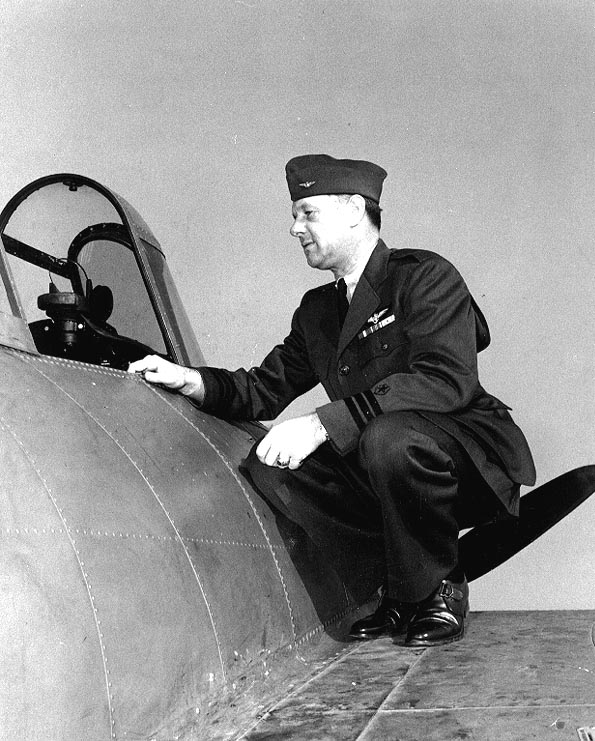
Cdr. Clarence Wade Mc Clusky Jr. in February 1943
In the hands of Butch O’Hare, Joe Foss, Marion Carl, and many others the stubby and rugged Wildcat held the line in the crucial battles of Guadalcanal, Coral Sea, Midway, and Eastern Solomons. This early phase which lasted for one year and a half saw the most intense and brutal fighting a navy pilot could even fathom. It was trial by fire, an unforgiving cauldron of deadly dogfights in which only the thoughest, bravest and most agressive, steel nerved and skilled people would emerged from. The Wildcat formed the cream of navy pilots that became officers (like Thach) and formed the next generation, as well as transitioned in 1943-45 on the Hellcat, putting their skills into good use in a much better fighter the Japanese could rightfully fear. Note that in the following detail (source in the links), O’Hare is perhaps one of the best known, as well as Stanley W. “Swede” Vejtasa, a few that fought on the F6F and survived to tell the tale. Half of these, included the first USN ace, Thatch, just had five confirmed victories but did not survived the war.
Top scorers:
- Joseph FossVMF-121, 26 victories
- John L. SmithVMF-223, 19
- Marion E. Carl VMF-223, 18.5
- James E. SwettVMF-221, 15.5
- Lt. Elbert McCuskey VF-3/VF-42/VF-8 13.5
- Robert E. Galer VMF-224, 13
- William P. MarontateVMF-121, 13
- Kenneth D. FrazierVMF-223, 12.5
- Loren D. EvertonVMF-212, 12
- Harold W. BauerVMF-212, 11
- Jefferson DeBlancVMF-112, 9
- Stanley W. “Swede” VejtasaVF-10/VF-8 10.3
- Whitey Feightner 9
- Ralph E. ElliottVC-27, 9
- Edward “Butch” O’HareVF-3, 7
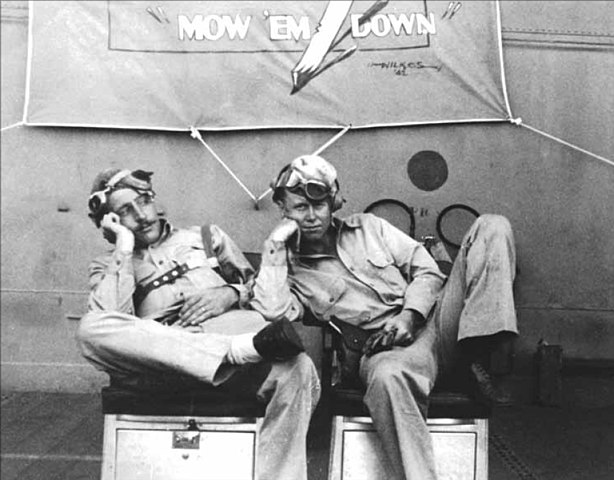
Two pilots of VF-10 in between alerts. To the right, Stanley W. “Swede” Vejtasa. He became “an ace in a day” by shooting down five planes duing the Santa Cruz island battle, onboard USS Enterprise (CV-6). He was a former Dauntless pilot, earning for this feat a third navy cross. He survived the war and made a brillant career until 1968, including Korea.
Sources/read more
Links
thisdayinaviation.com on the F4F
thisdayinaviation.com in the xf4f-2
tailspintopics.blogspot.com
aviation-history.com
weaponsandwarfare.com
thanlont.blogspot.com
www.angelfire.com on F4F pt.1
On thoughtco.com
On wwiiaircraftperformance.org
On acepilots.com/
Cactus AF on historynet.com
O’Hare on acepilots.com
On historyofwar.org
On mcara.us
The F4F-7 on historyofwar.org
On ibiblio.org
On bbc.com
On uboat.net
On naval-history.net
doczz.net: Canadian use of the Hellcat
Wiki
history.navy.mil
flyingleathernecks.org
daveswarbirds.com
Books
Aircraft Pictorial No. 4: F4F Wildcat
Wildcat Aces of World War 2 (1st ed.). Osprey 1995.
Lednicer, David. “The Incomplete Guide to Airfoil Usage
Swanborough and Bowers 1976, p. 205.
Videos:
Grumman F4F Wildcat – Foreign Variants (British Martlet)
Grumman Wildcat and FM-2 – Greg’s channel
F4F Wildcat / Martlet – Armoured carriers channel
The Models Corner:
A very popular model as one could imagine: 150+ kits over the years by a multitude of makers. Link: scalemates general query.
US Navy models Gallery:
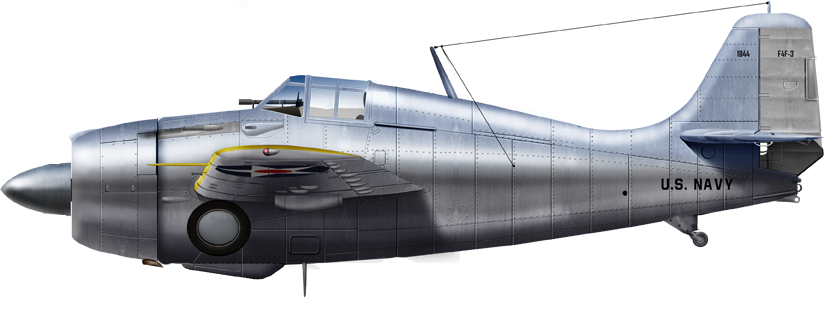
F4F-3 first production plane, BuNo 1844, 1940. It was a test machine, not yet given to any unit.
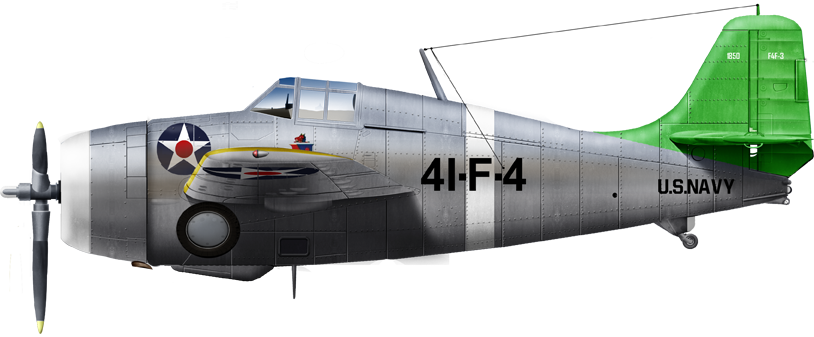
F-3 from USS Ranger, neutrality patrols April 1941
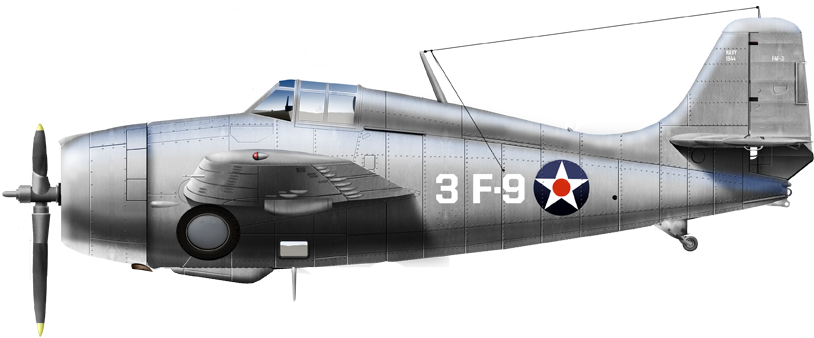
F3 from CV-3, USS Saratoga, Spring 1941
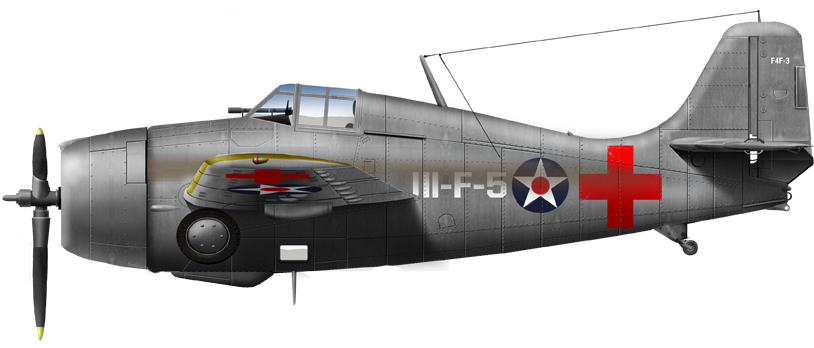
F4F-3 from VMF-111 from the “red team” in exercizes, Quantico mid-1941
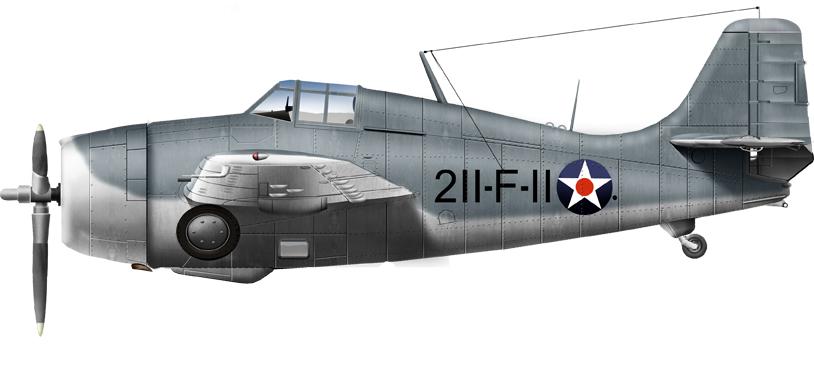
F4F-3 from vmf-211 defending Wake Island, 8 Dec. 1941
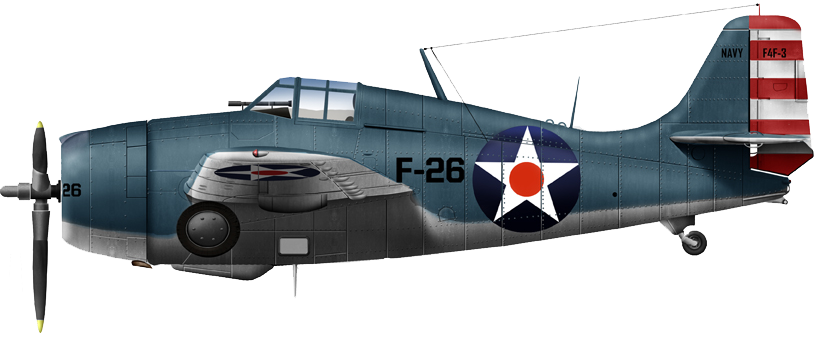
F4F-3 from VF8, USS Hornet, Doolittle Raid 18 April 1942
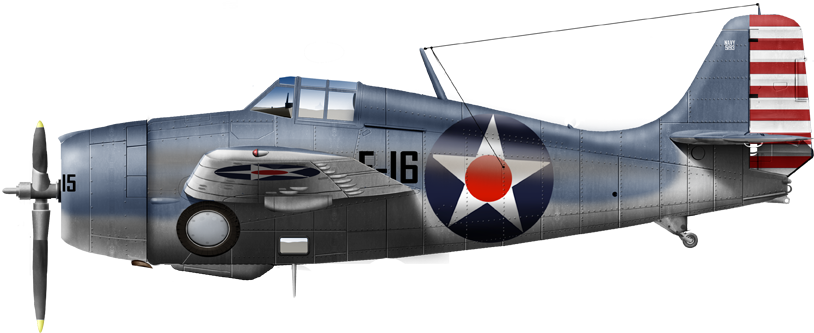
F-3, VMF-111 Samoa, March 1942
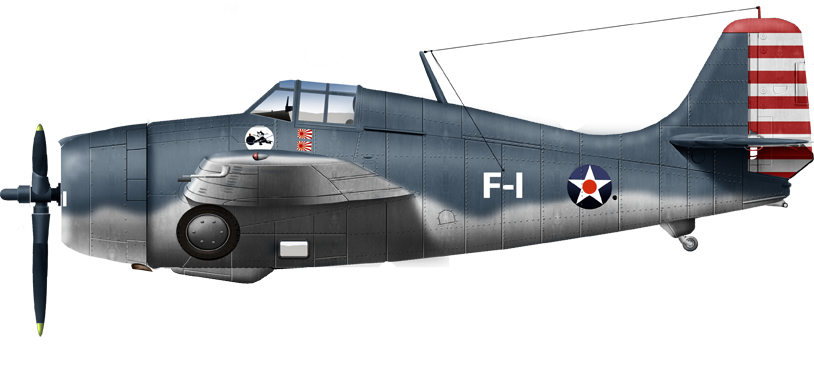
vf-3 “felix” USN Ace J.S. Thach, Midway May 1942
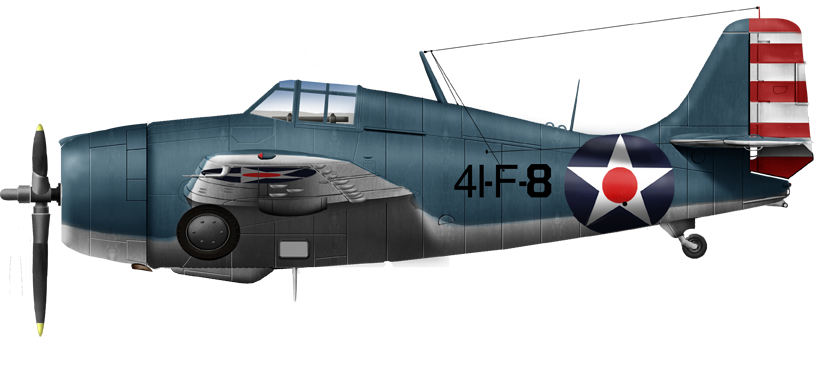
F4F-3A of VF-41, USS Ranger, Operation Torch November 42
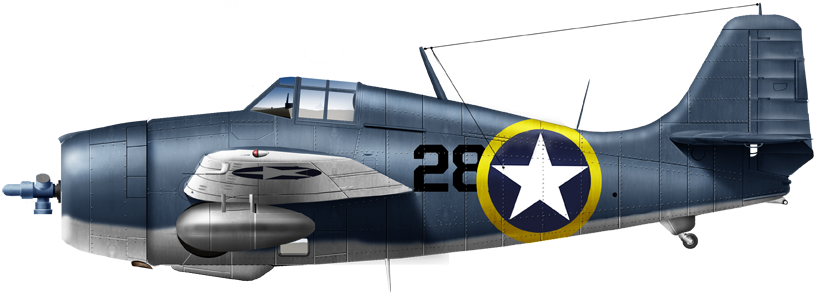
F-4 from Vf-41 US Ranger November 1942, Op. Torch
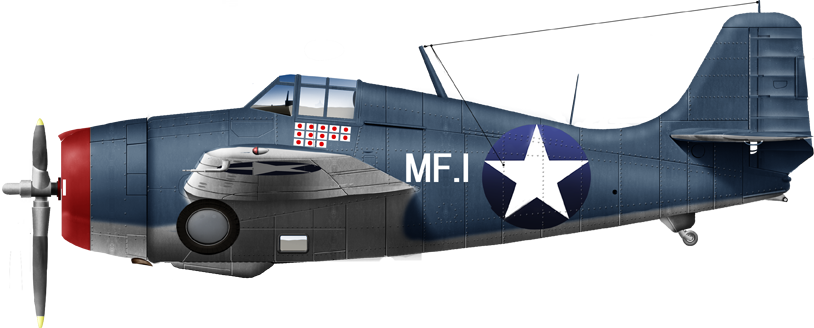
F3 from VMF-224, Henderson Field, Guadalcanal, Ace Robert Galer, late 1942
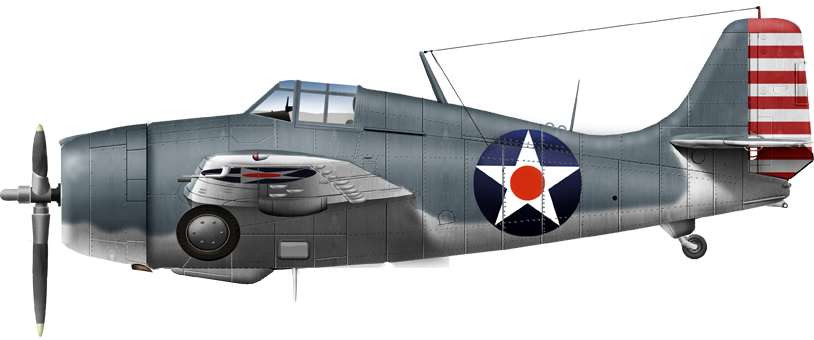
F4F-3 from VMF-111 “Devil Dogs” USMC March 1942, Tafuna Airfield, Tutuila island (Samoa)
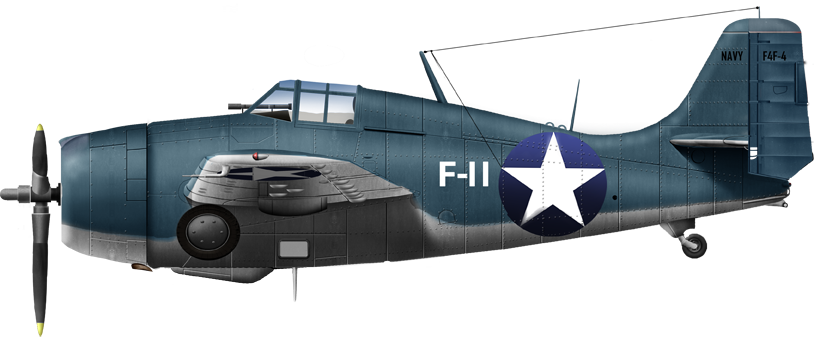
F4F-4 onboard USS Long Island, 1943
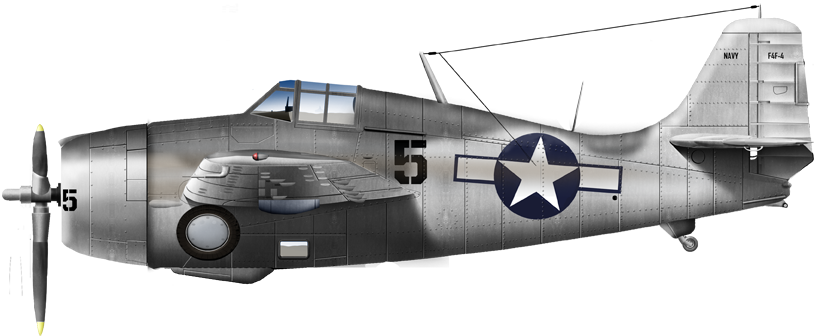
F4F-4 VF-29, USS Santee, Atlantic Nov. 1943
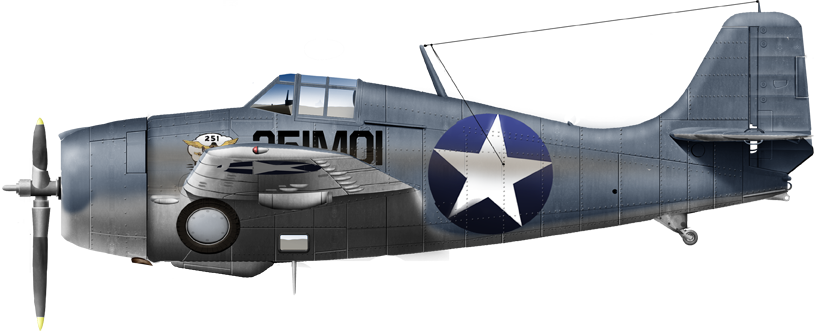
F4F3P reconnaissance version, Espiritu Santo, New Hebrides Late 1942
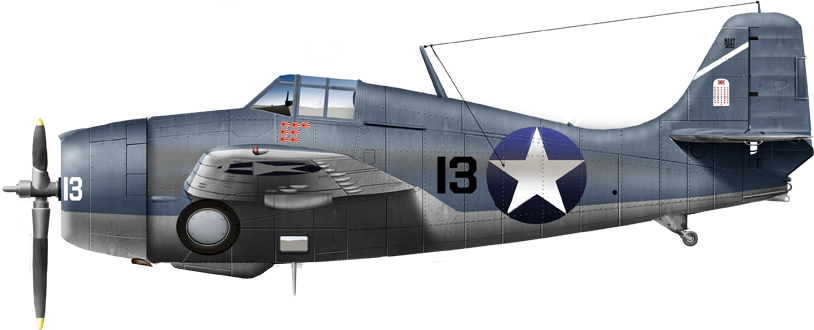
F3 from VF-6, USS Enterprise, Guadalcanal August 1942
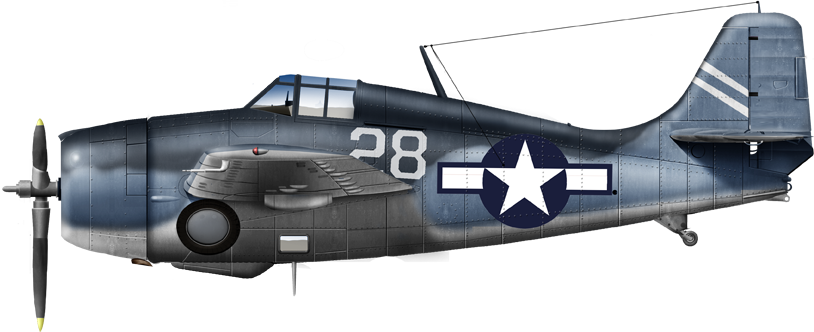
F-3 frim VF-39 USS Liscome Bay, November 1943
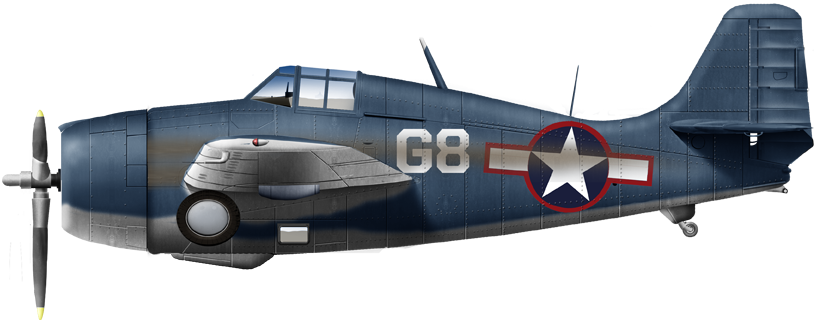
F4F-4 from a training unit in 1943
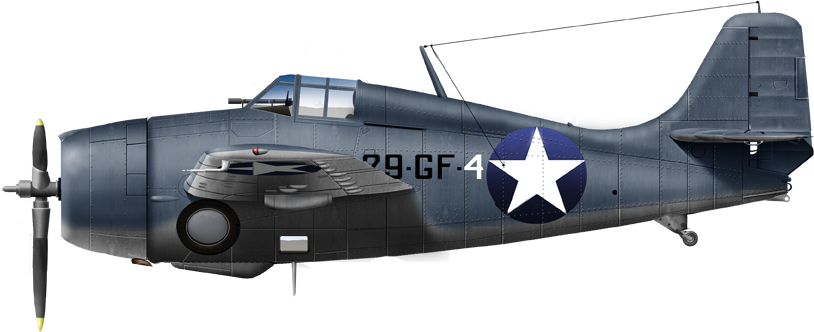
F3 from VGF-29 USS Santee 1944
General motors/Eastern Aircraft FM series:

FM-1 from VC-12, YSS Core, CVE-13
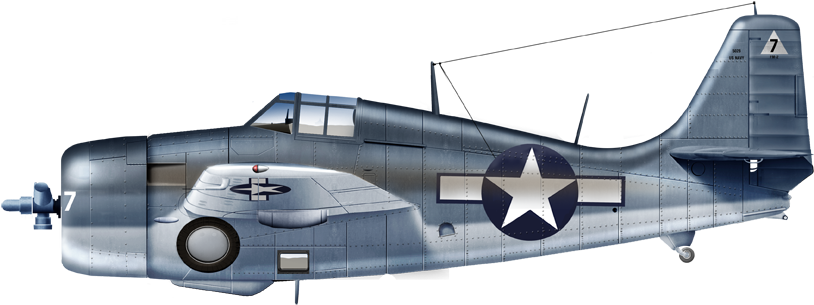
East Aircraft FM-2, VC-2, USS White Plains 1944
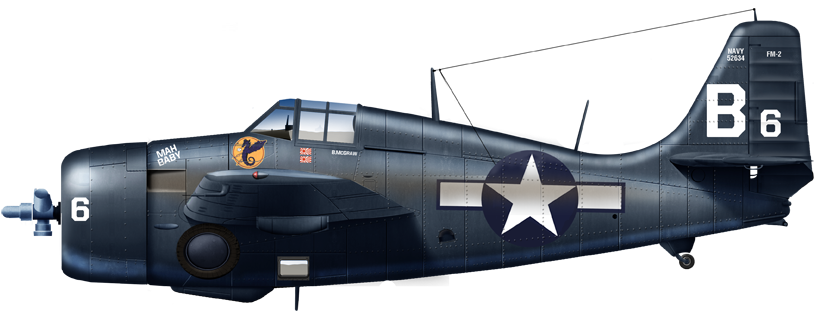
FM-2 VC-10 onboard USS Gambier Bay October 1944: She was sunk at the battle of Samar
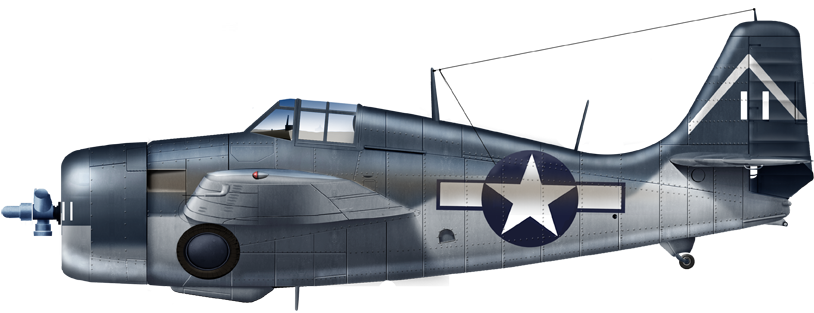
FM-2 VC-80 USS Manila Bay, May 1944
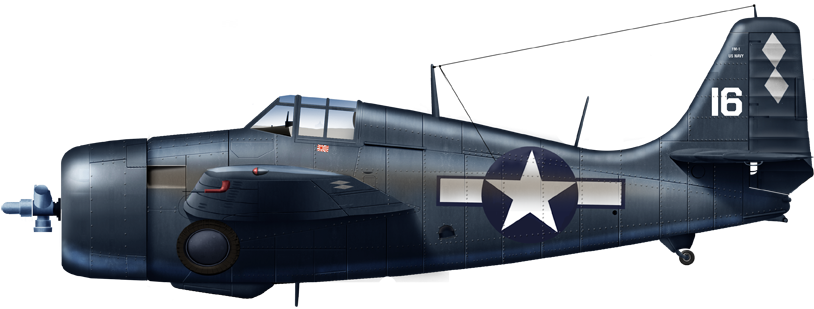
FM-2 VC-9 USS Sargent Bay, 1945
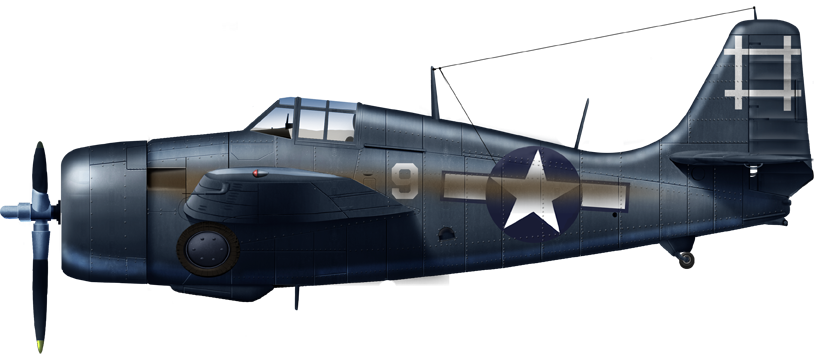
FM-2, USS Rudyerd Bay, April 1945
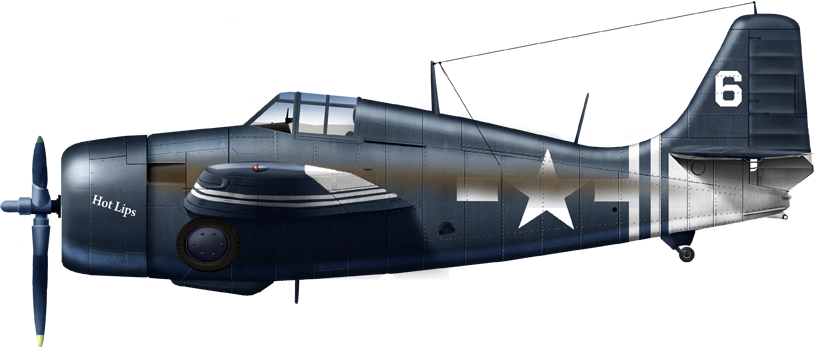
FM-2 onboard USS Hogatt Bay, 1945
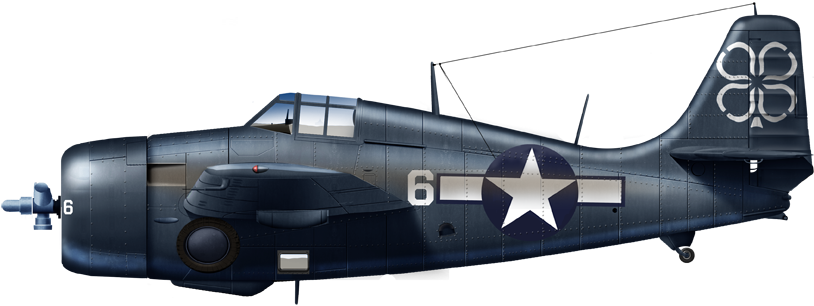
FM-2 from VC-93, USS Petroff Bay, May 1945
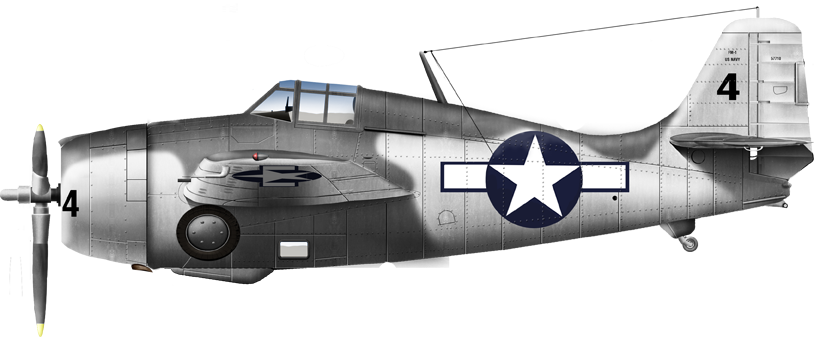
East Aircraft GM FM-1, USS Guadalcanal, 1944
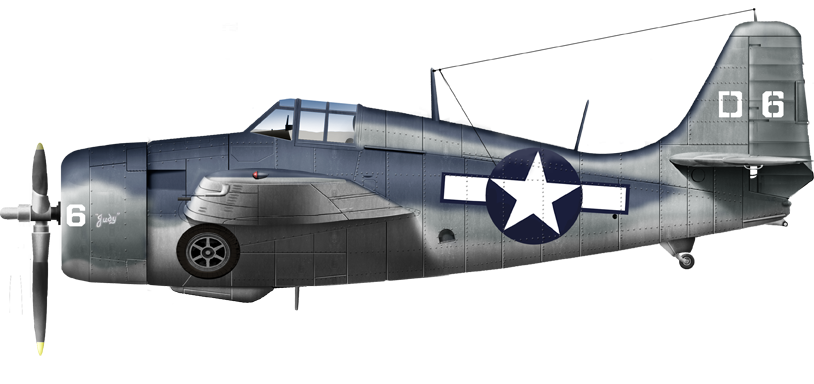
Eastern Aircraft FM-2, “judy” VC-14 USS Hogatt Bay (CV-75), Emirau Island (Bismarck Archipelago), May 1944. The latter was a Casablanca-class escort carrier commissioned in January 1944 and decommissioned in 1946, then CVHE-75 (heli-carrier) in 1955-59 and AKV-25 from 1959.
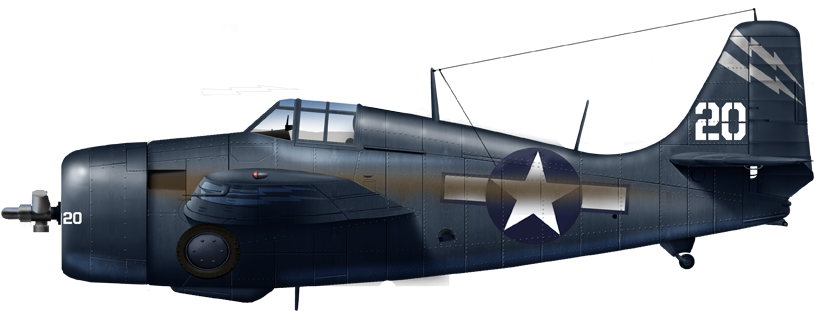
FM-2 on uss Hoggatt Bay, Okinawa 1945
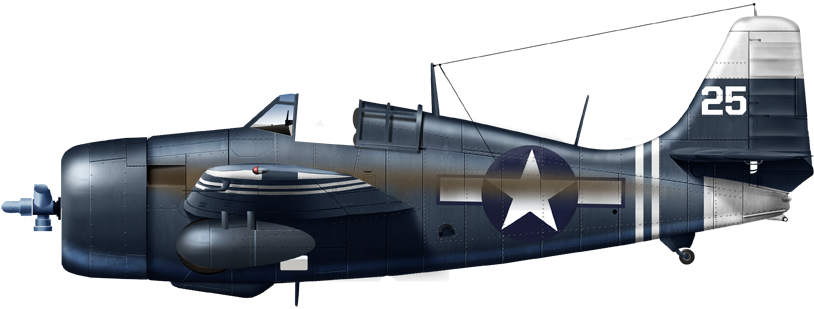
General motors FM-2 CV93 USS Fanshaw Bay August 1945
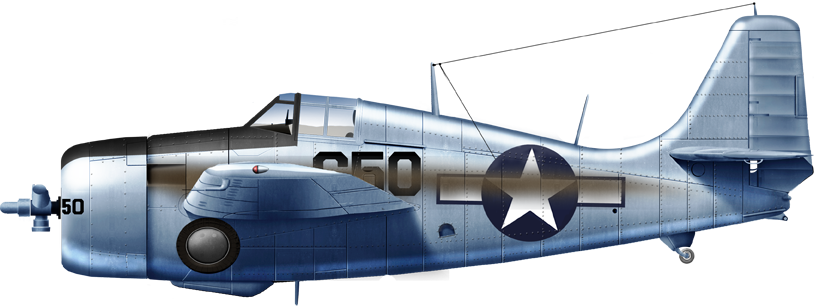
FM-2 advanced trainer, winter 1945
Fleet Air Arm Gallery:
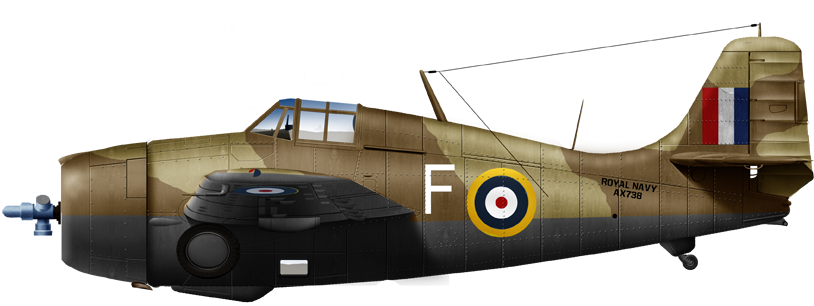
Martlet IIF (one of the ex-French models) 805 Squadron from a Naval Air Station in North Africa used in night patrols, winter 1941-42.
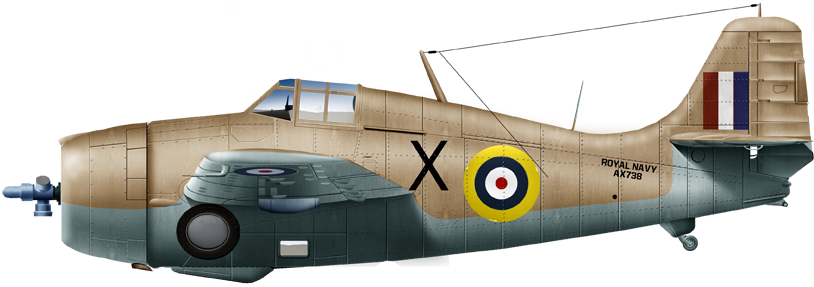
Martlet Mk.III 805 Squadron Matten Bagush, Egypt, April 1942
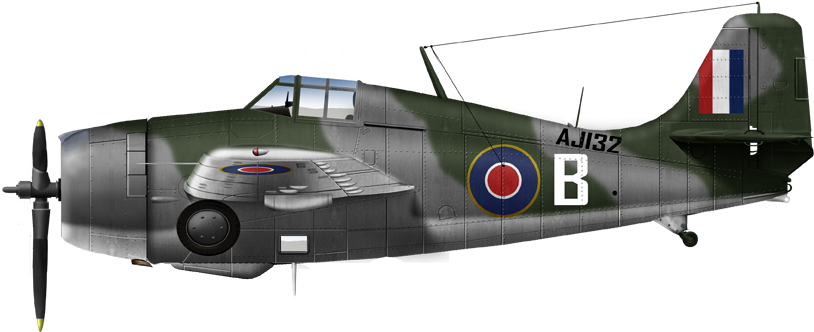
Martlet II from Sqn.881, HMS Illustrious 1942
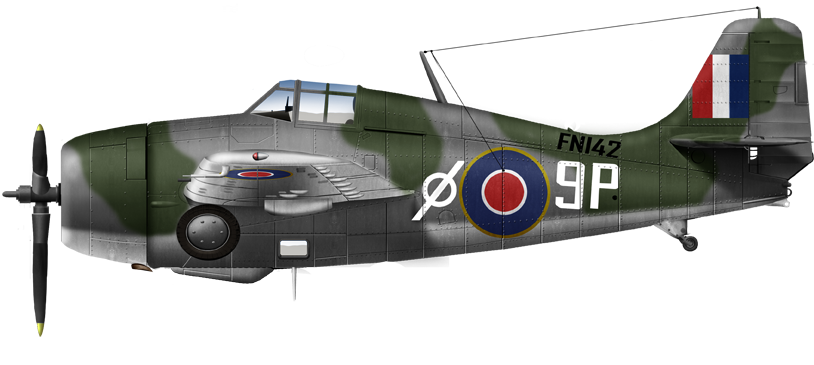
Martket V, 893 Sqn. HMS Formidable 1943
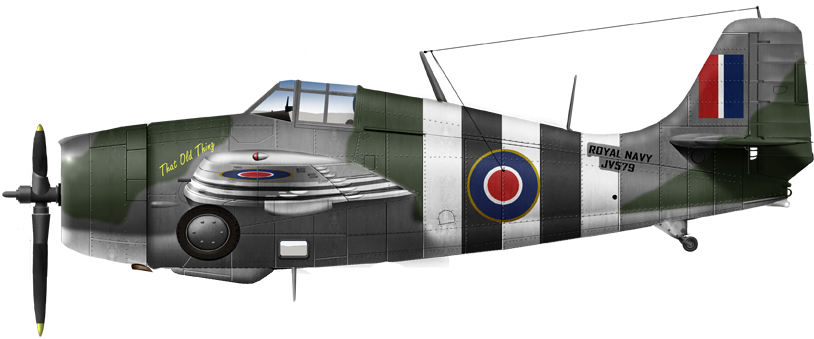
Martlet V “that old thing”, 856 Sqn. over Normandy, June 1944
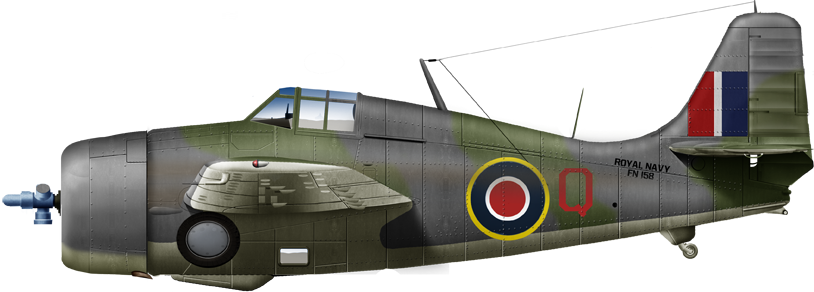
Martlet IV HMS Biter February 1944
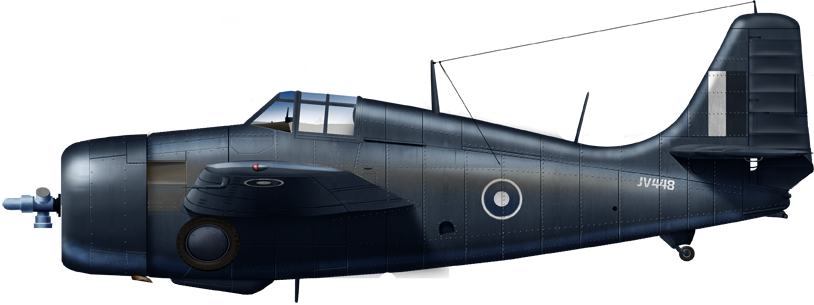
Wildcat VI of the Far East Fleet, Pacific, May 1944
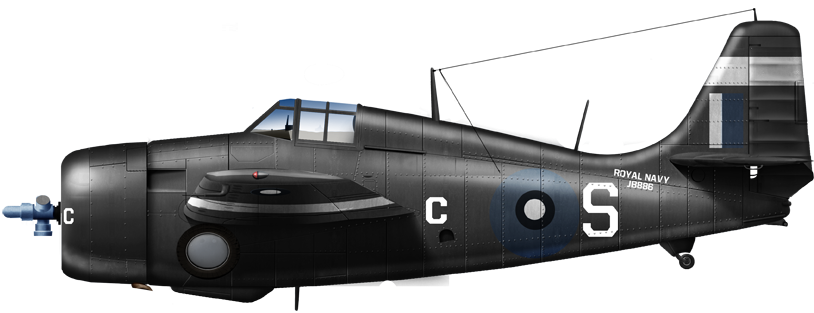
Wildcat VI 882 Squadron Far East Fleet 1945.
Photos
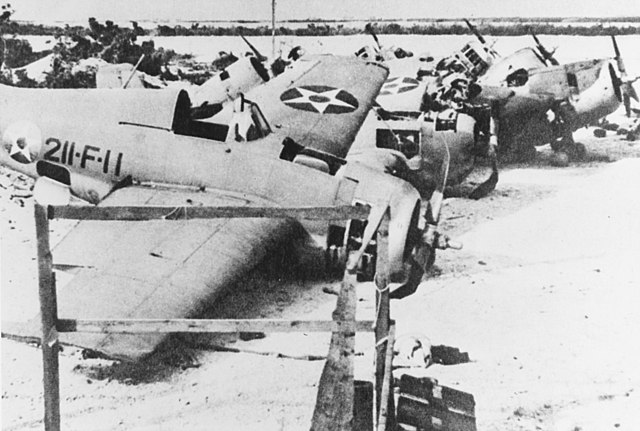
Wrecked F4F on Wake Island December 1941
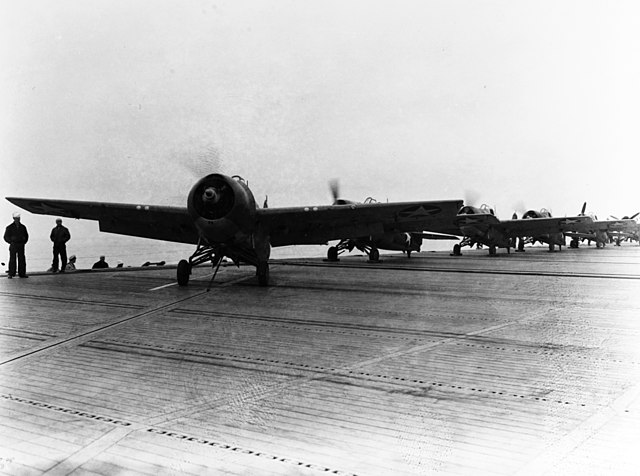
F4F from VGS-1, USS Long Island June 1942
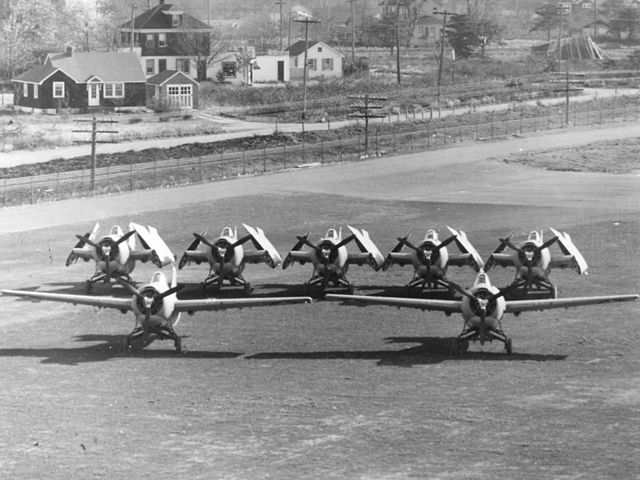
F4F parked with and without folded wings, circa 1942
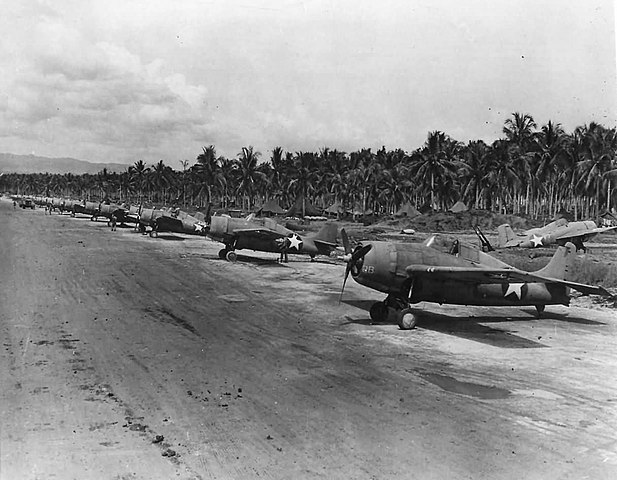
F4Fs over Guadalcanal, 1942
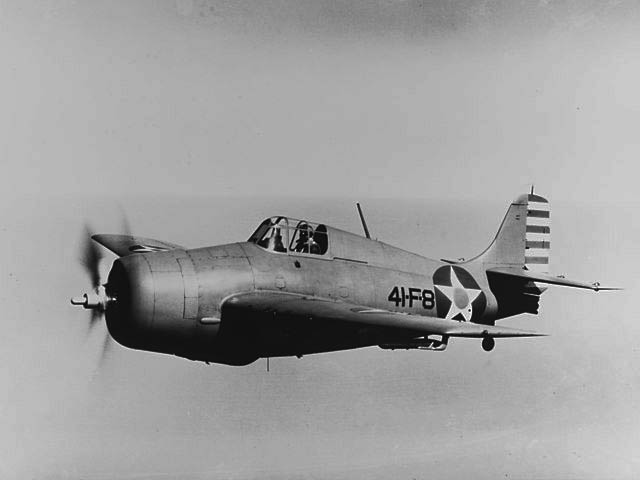
F4F flight from VF41, early 1942
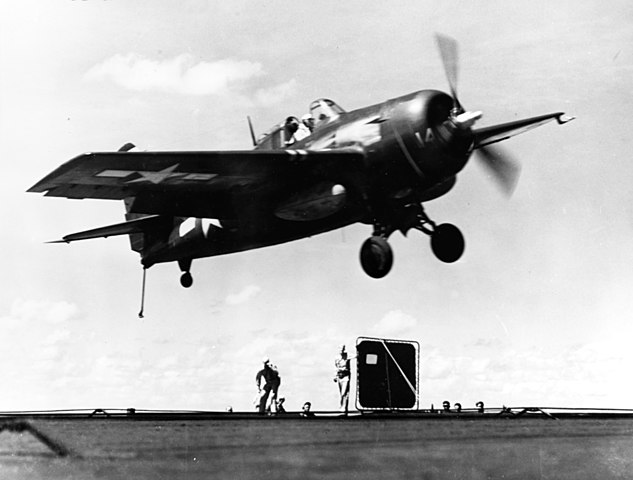
GM FM-2 landing on USS Makin Island in 1945
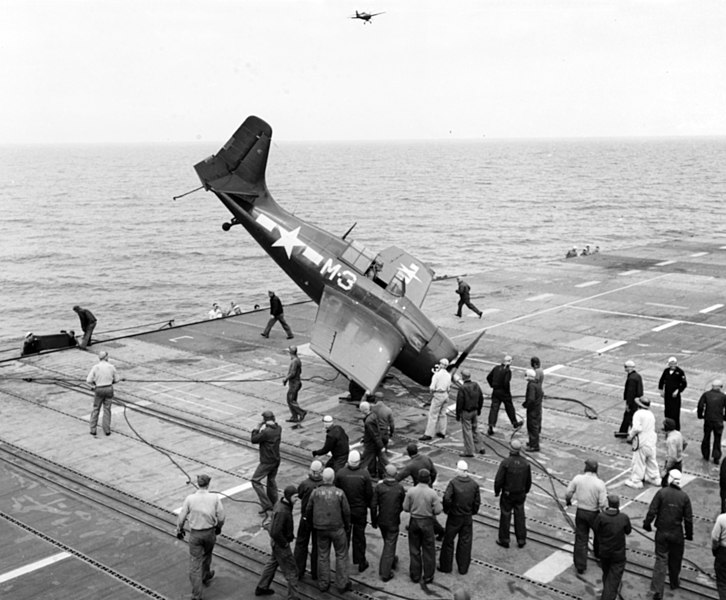
FM-2 barrier crash, USS Sable, 8 May 1945
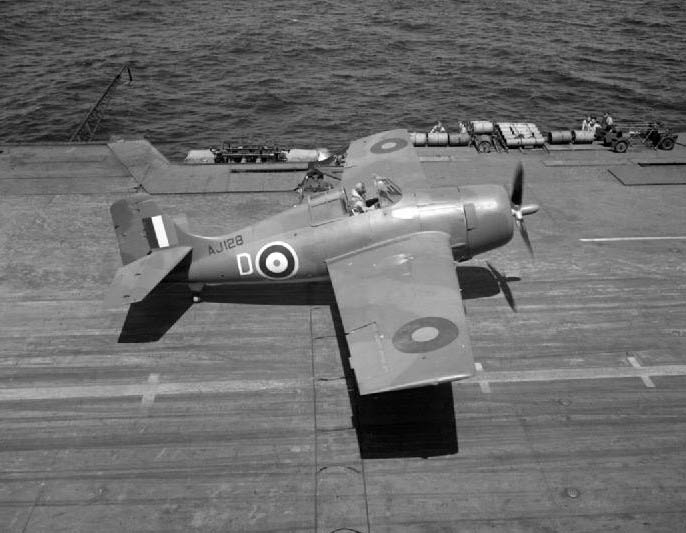
Martlet II onboard HMS Formidable 1942
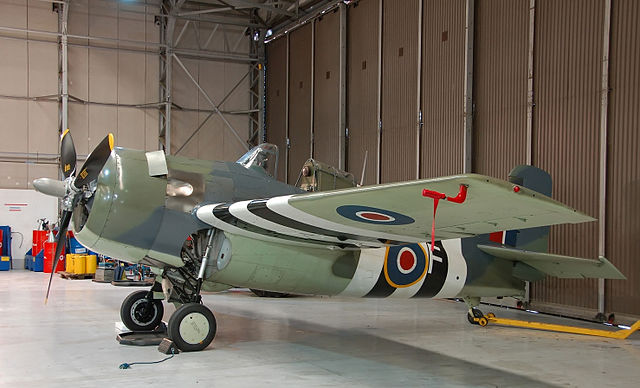
Martlet/Wildcat REJS
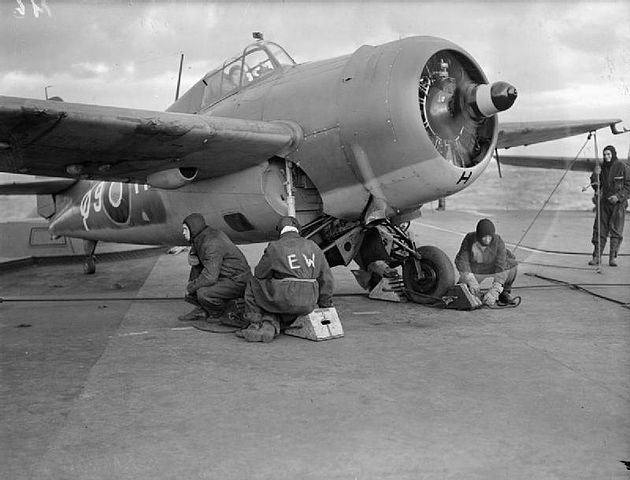
Martlet on HMS Formidable
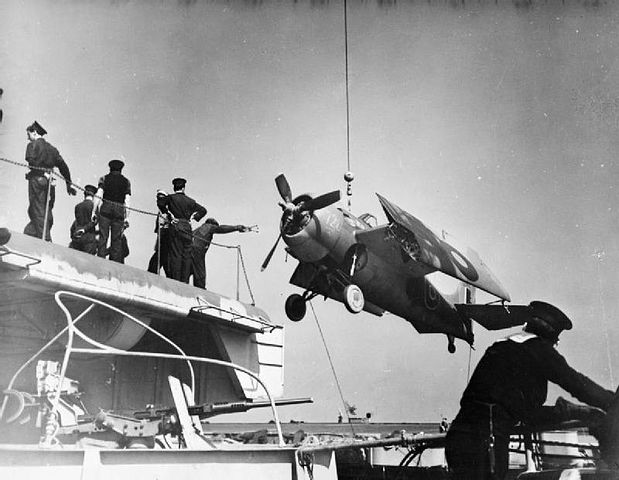
Martlet winched abord HMS Empress 1944
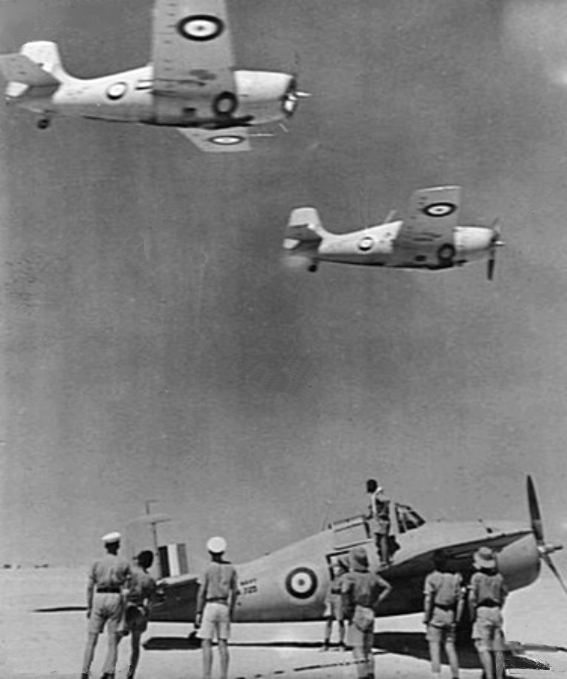
Martlet III 805 NAS North Africa
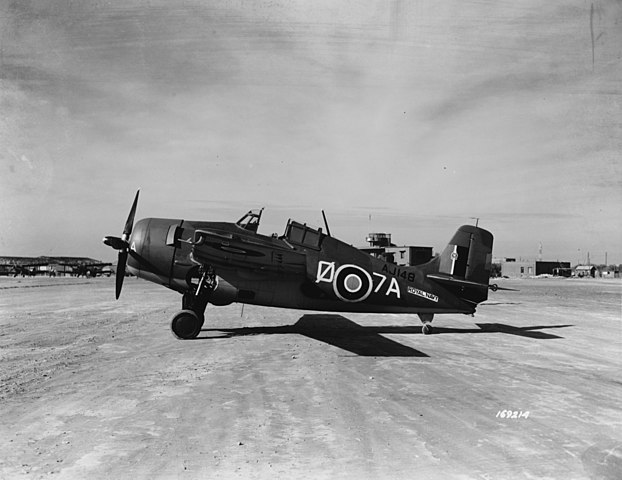
Martlet II from 888 Sqn. HMS Formidabe, Oran 1942
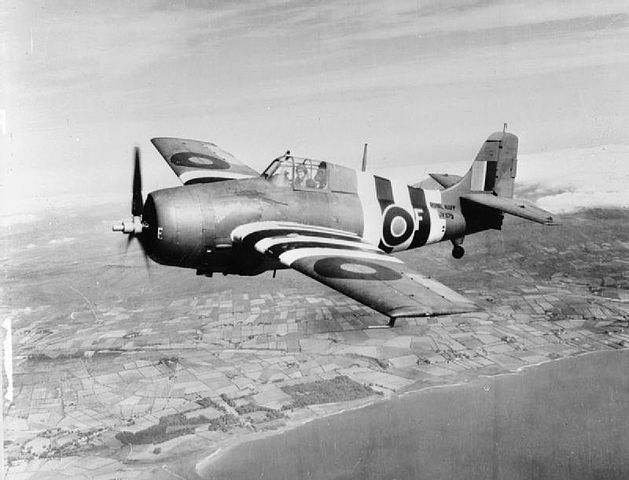
Martlet Mark.V over Normandy, june 1944
Wildcat Mark.VI at Duxford, 2008
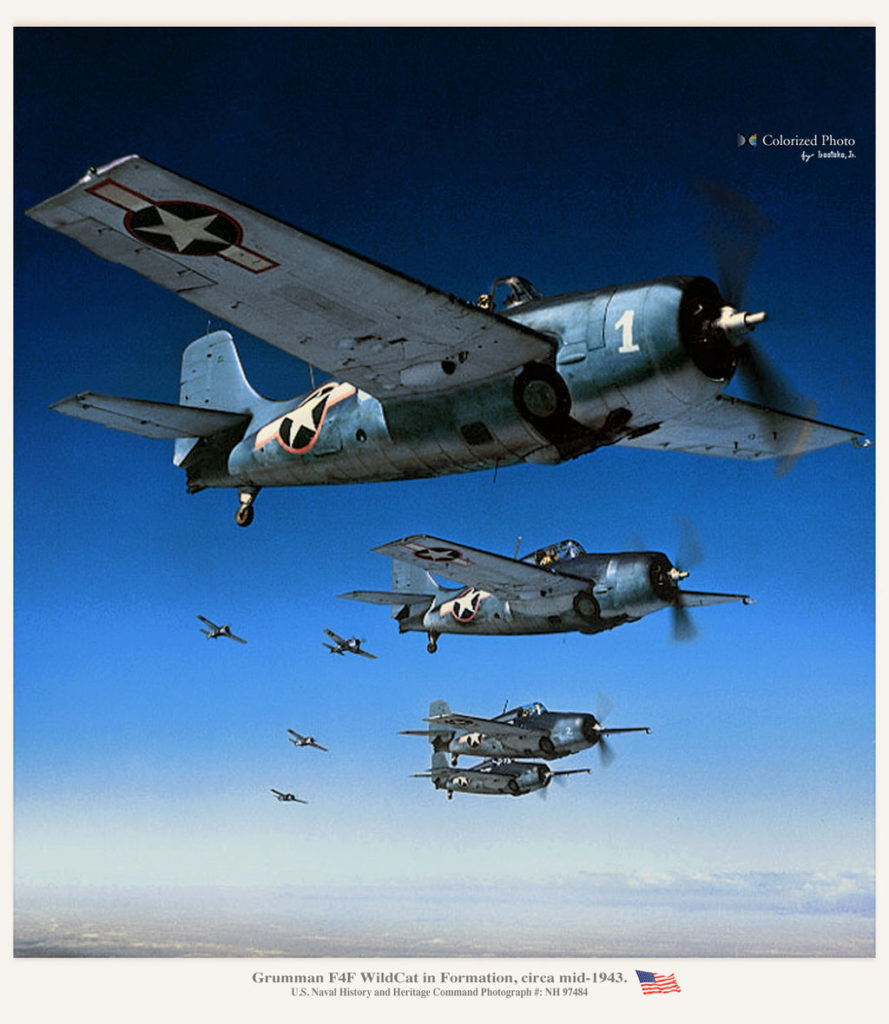
Wildcats in formation mid-1943, colorized by Irootoko Jr. .




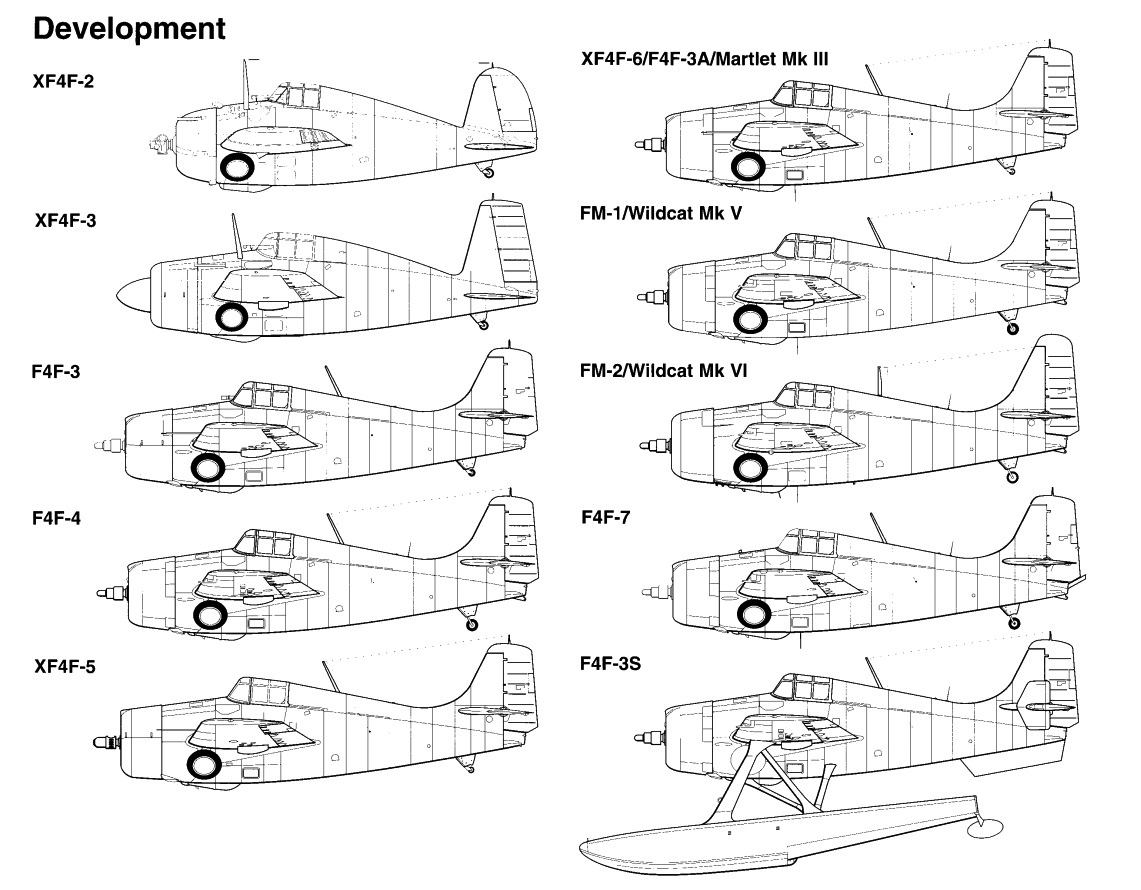
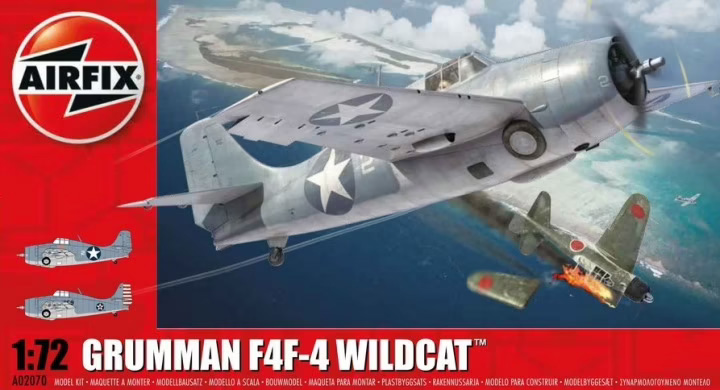
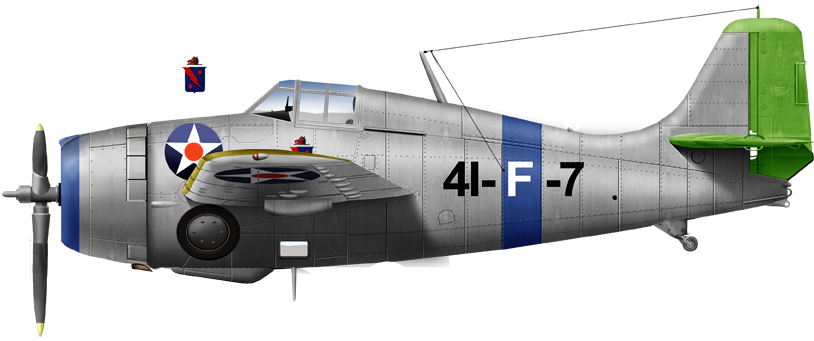
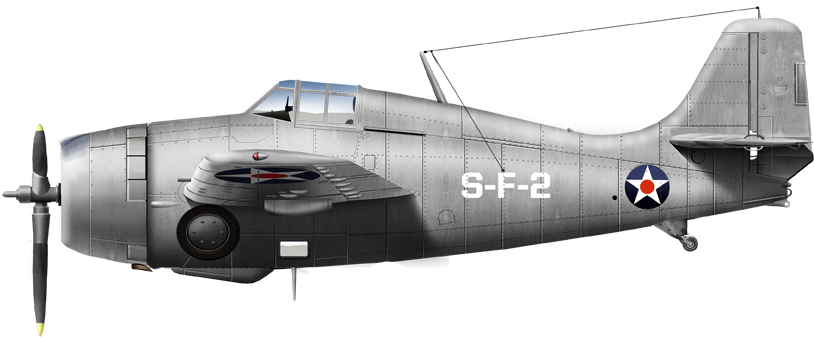
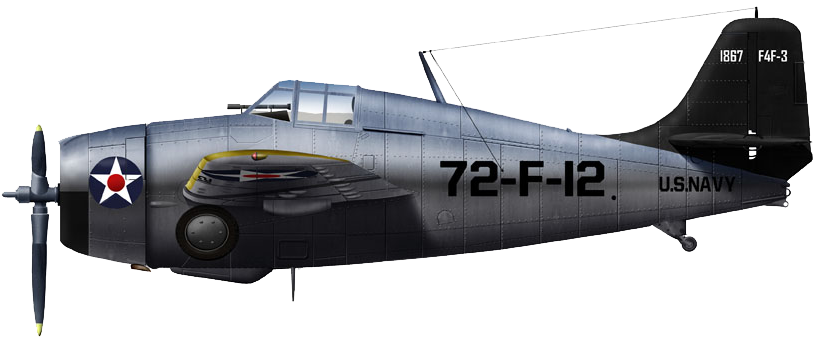
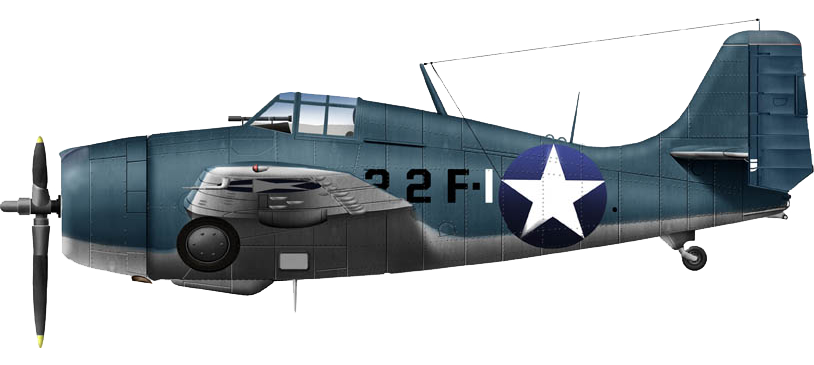
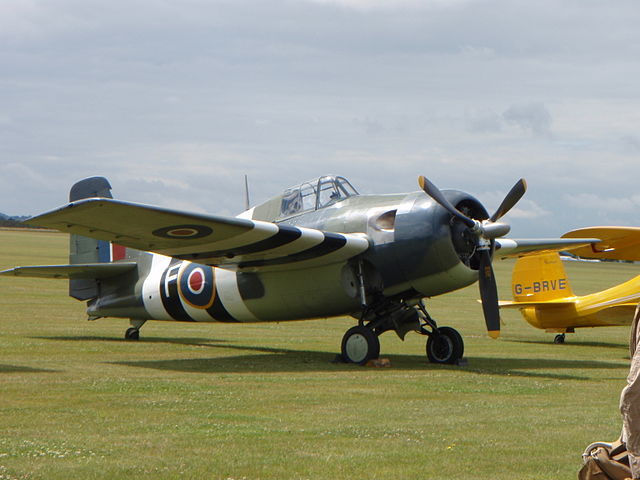
 Latest Facebook Entry -
Latest Facebook Entry -  X(Tweeter) Naval Encyclopedia's deck archive
X(Tweeter) Naval Encyclopedia's deck archive Instagram (@navalencyc)
Instagram (@navalencyc)





 French Navy
French Navy Royal Navy
Royal Navy Russian Navy
Russian Navy Armada Espanola
Armada Espanola Austrian Navy
Austrian Navy K.u.K. Kriegsmarine
K.u.K. Kriegsmarine Dansk Marine
Dansk Marine Nautiko Hellenon
Nautiko Hellenon Koninklije Marine 1870
Koninklije Marine 1870 Marinha do Brasil
Marinha do Brasil Osmanlı Donanması
Osmanlı Donanması Marina Do Peru
Marina Do Peru Marinha do Portugal
Marinha do Portugal Regia Marina 1870
Regia Marina 1870 Nihhon Kaigun 1870
Nihhon Kaigun 1870 Preußische Marine 1870
Preußische Marine 1870 Russkiy Flot 1870
Russkiy Flot 1870 Svenska marinen
Svenska marinen Søværnet
Søværnet Union Navy
Union Navy Confederate Navy
Confederate Navy Armada de Argentina
Armada de Argentina Imperial Chinese Navy
Imperial Chinese Navy Marinha do Portugal
Marinha do Portugal Mexico
Mexico Kaiserliche Marine
Kaiserliche Marine 1898 US Navy
1898 US Navy Sovietskiy Flot
Sovietskiy Flot Royal Canadian Navy
Royal Canadian Navy Royal Australian Navy
Royal Australian Navy RNZN Fleet
RNZN Fleet Chinese Navy 1937
Chinese Navy 1937 Kriegsmarine
Kriegsmarine Chilean Navy
Chilean Navy Danish Navy
Danish Navy Finnish Navy
Finnish Navy Hellenic Navy
Hellenic Navy Polish Navy
Polish Navy Romanian Navy
Romanian Navy Turkish Navy
Turkish Navy Royal Yugoslav Navy
Royal Yugoslav Navy Royal Thai Navy
Royal Thai Navy Minor Navies
Minor Navies Albania
Albania Austria
Austria Belgium
Belgium Columbia
Columbia Costa Rica
Costa Rica Cuba
Cuba Czechoslovakia
Czechoslovakia Dominican Republic
Dominican Republic Haiti
Haiti Hungary
Hungary Honduras
Honduras Estonia
Estonia Iceland
Iceland Eire
Eire Equador
Equador Iran
Iran Iraq
Iraq Latvia
Latvia Liberia
Liberia Lithuania
Lithuania Mandchukuo
Mandchukuo Morocco
Morocco Nicaragua
Nicaragua Persia
Persia San Salvador
San Salvador Sarawak
Sarawak Uruguay
Uruguay Venezuela
Venezuela Zanzibar
Zanzibar Warsaw Pact Navies
Warsaw Pact Navies Bulgaria
Bulgaria Hungary
Hungary

 Bundesmarine
Bundesmarine Dutch Navy
Dutch Navy Hellenic Navy
Hellenic Navy Marina Militare
Marina Militare Yugoslav Navy
Yugoslav Navy Chinese Navy
Chinese Navy Indian Navy
Indian Navy Indonesian Navy
Indonesian Navy JMSDF
JMSDF North Korean Navy
North Korean Navy Pakistani Navy
Pakistani Navy Philippines Navy
Philippines Navy ROKN
ROKN Rep. of Singapore Navy
Rep. of Singapore Navy Taiwanese Navy
Taiwanese Navy IDF Navy
IDF Navy Saudi Navy
Saudi Navy Royal New Zealand Navy
Royal New Zealand Navy Egyptian Navy
Egyptian Navy South African Navy
South African Navy






























 Ukrainian Navy
Ukrainian Navy dbodesign
dbodesign
Hello,
I am the Assistant Director at the New Smyrna Beach Airport. Recently we discovered a component of the catapult runway at our airport which housed F4F wildcats. I was wondering If you had any information on the catapult runway system used at airports for training.
Unfortunately no. But thx for asking and all the best for your search.